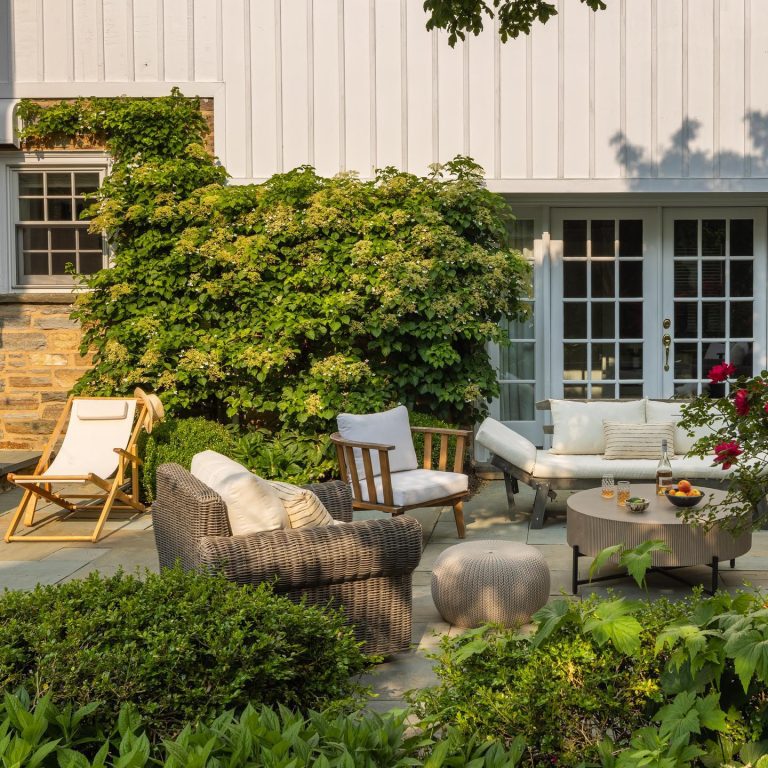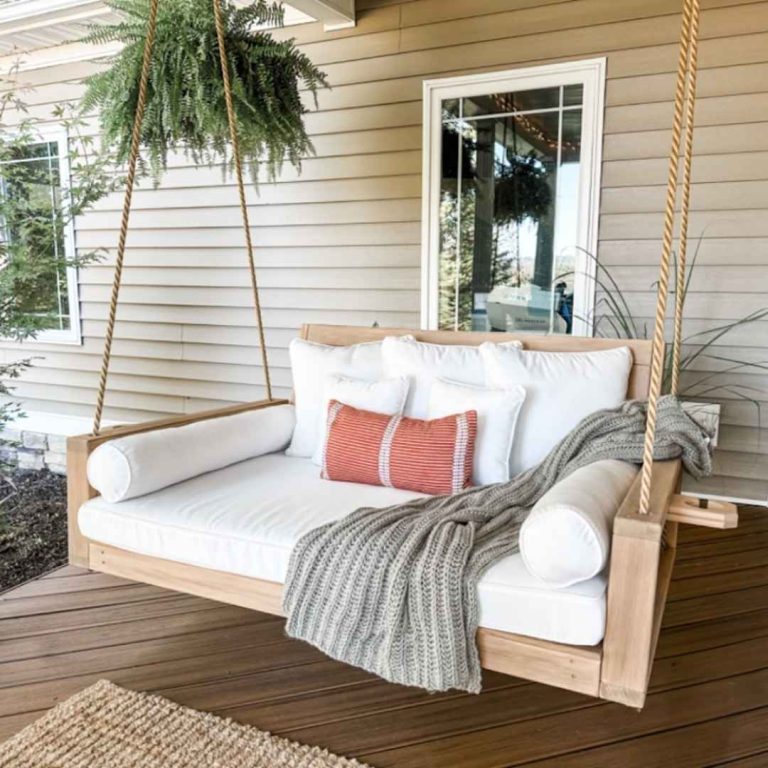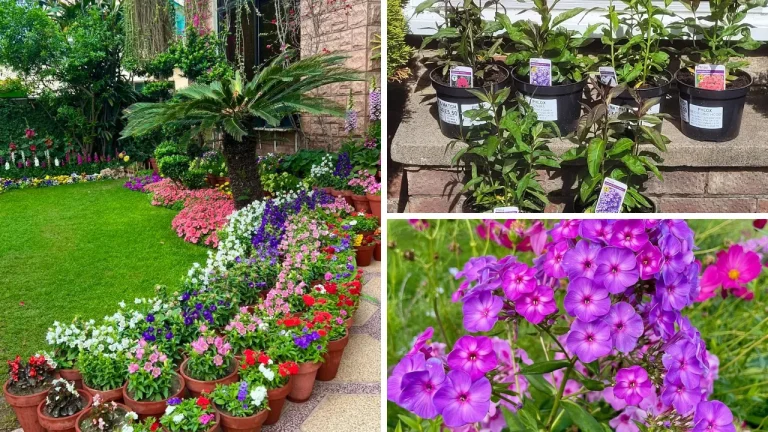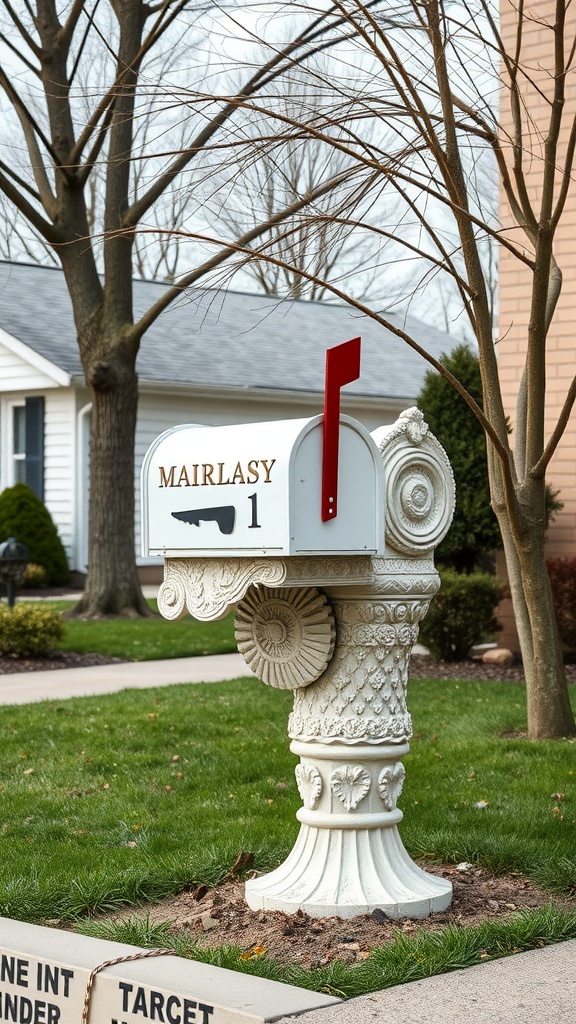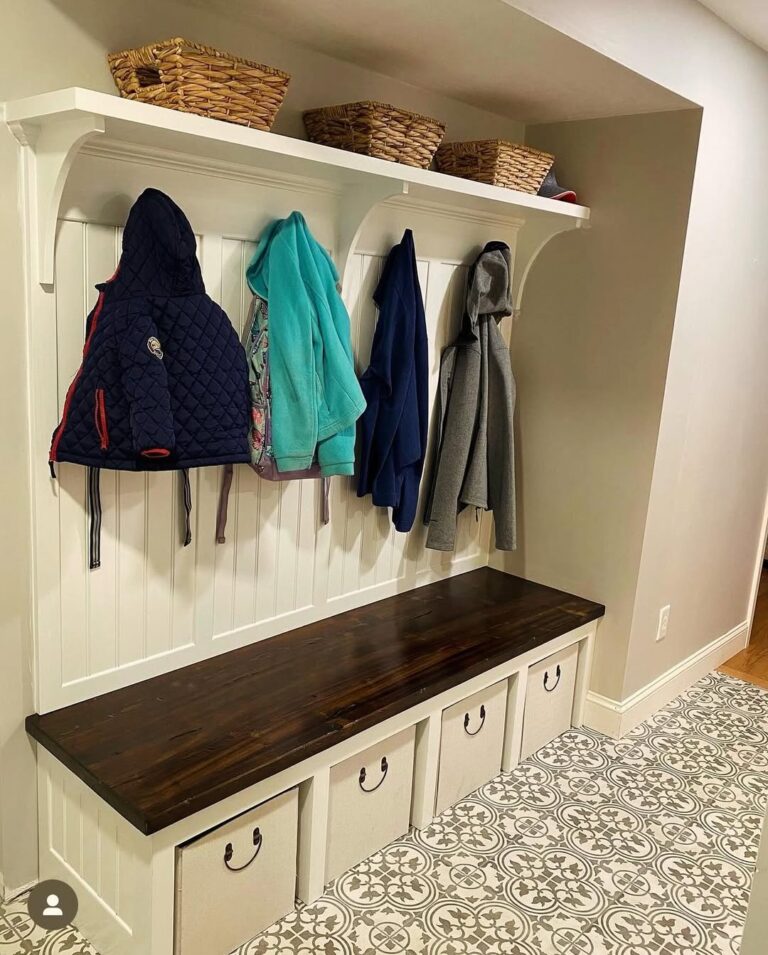25 Beautiful Bushes for Enhancing Your Home’s Curb Appeal
When it comes to increasing the curb appeal of your home, few things can match the impact of well-chosen and well-placed bushes. Whether you’re looking for vibrant colors, fragrant blooms, or year-round greenery, there’s a bush that can meet your needs.
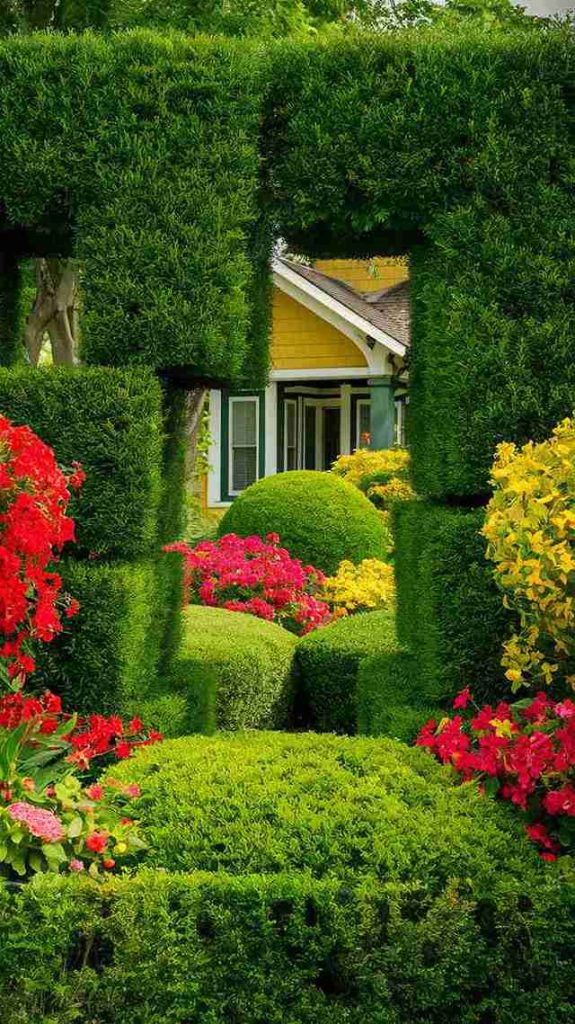
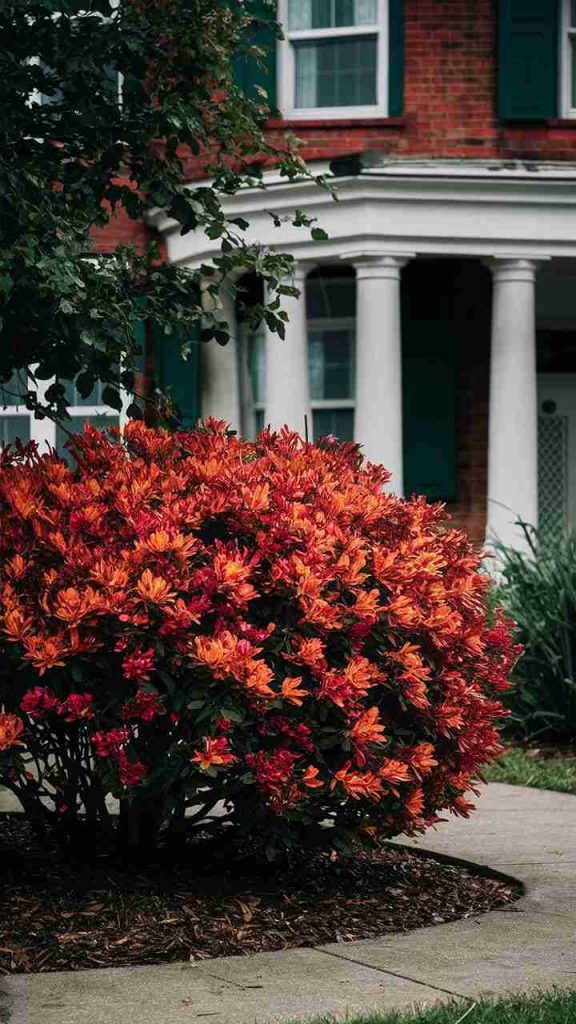
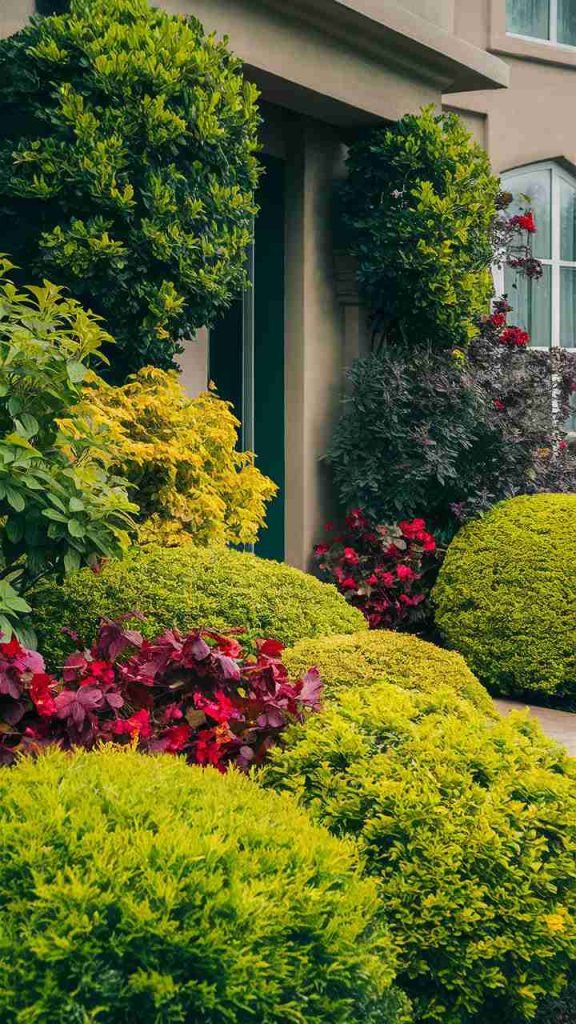
Here are 25 fantastic bushes to consider for the front of your house.
1. Boxwood (Buxus)

Boxwood is a classic choice for homeowners seeking a tidy and versatile shrub. Known for its dense, evergreen foliage, Boxwood can be shaped into hedges, topiaries, or left to grow naturally. Its ability to withstand heavy pruning makes it ideal for creating formal garden designs or maintaining clean lines along walkways and driveways.
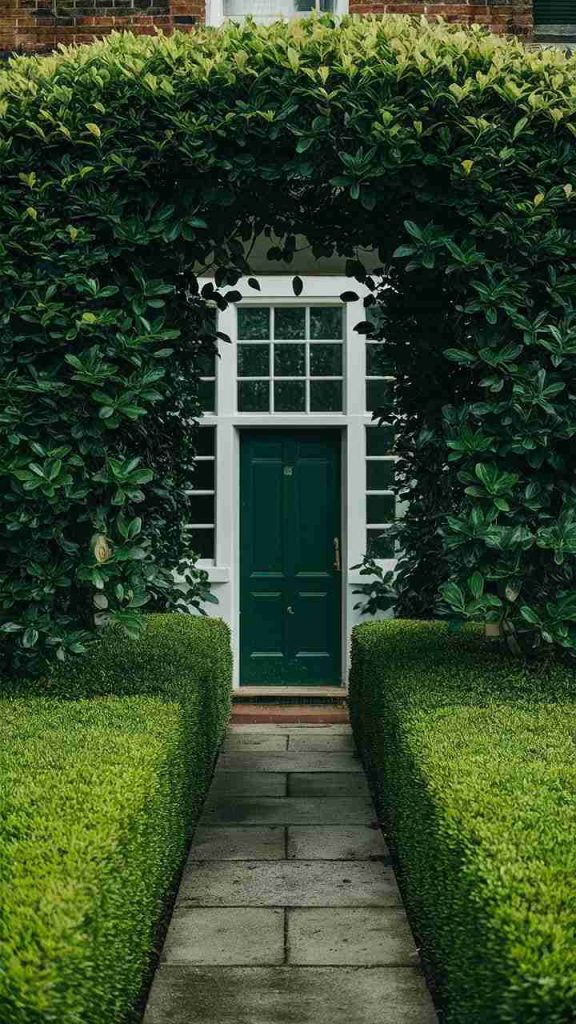
Boxwood thrives in both sun and partial shade, making it adaptable to various front yard conditions. It grows slowly, which reduces the need for frequent maintenance. However, it is essential to provide well-drained soil to prevent root rot.
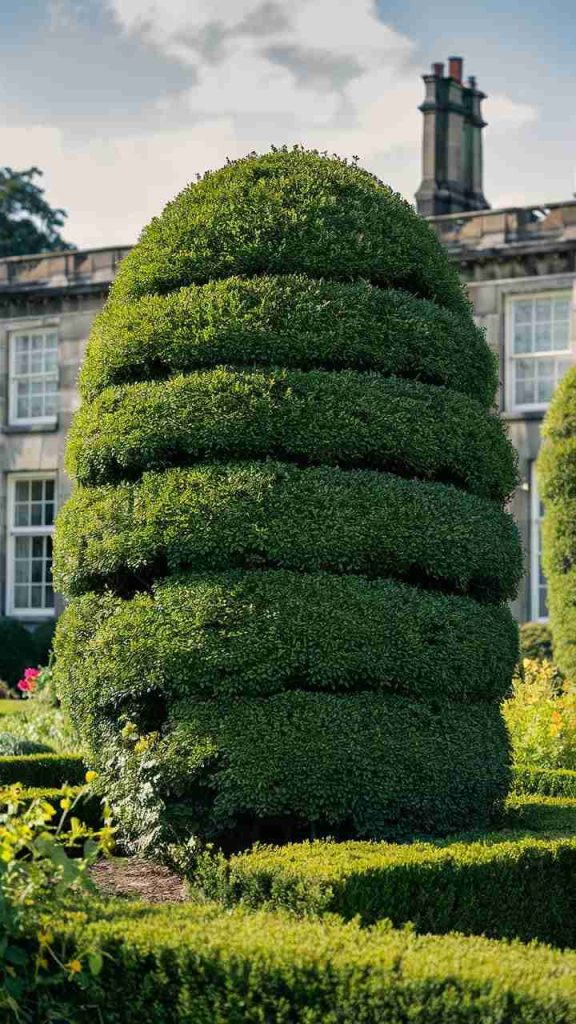
Aside from its aesthetic appeal, Boxwood also serves a functional purpose. It can act as a windbreak or privacy screen, helping to create a serene outdoor space. Additionally, its dense foliage provides shelter for small birds and beneficial insects.
2. Hydrangea
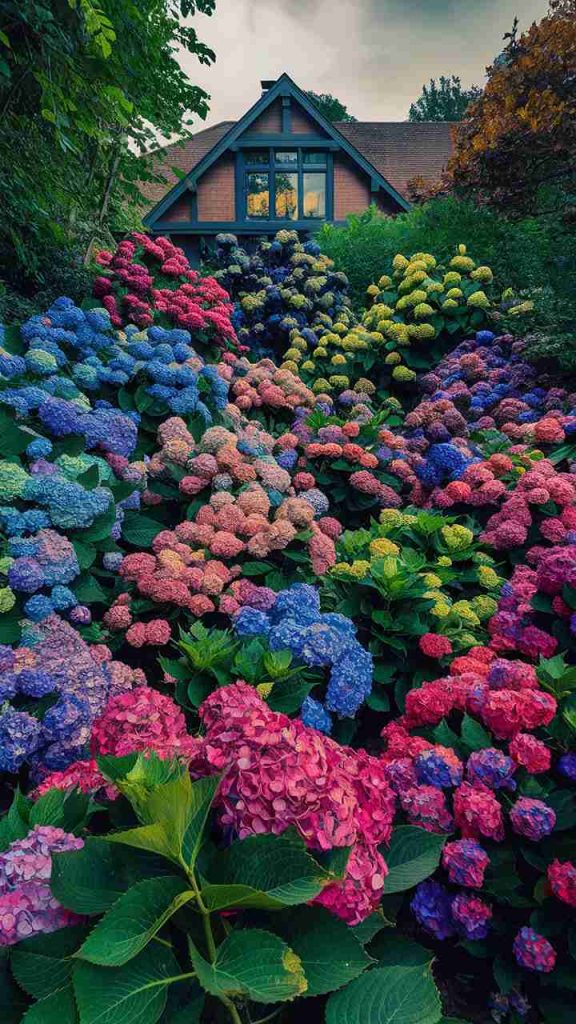
Hydrangeas are beloved for their large, stunning flower clusters that come in shades of blue, pink, white, and purple. These deciduous shrubs can transform the look of your front yard from late spring through fall, thanks to their long blooming period.
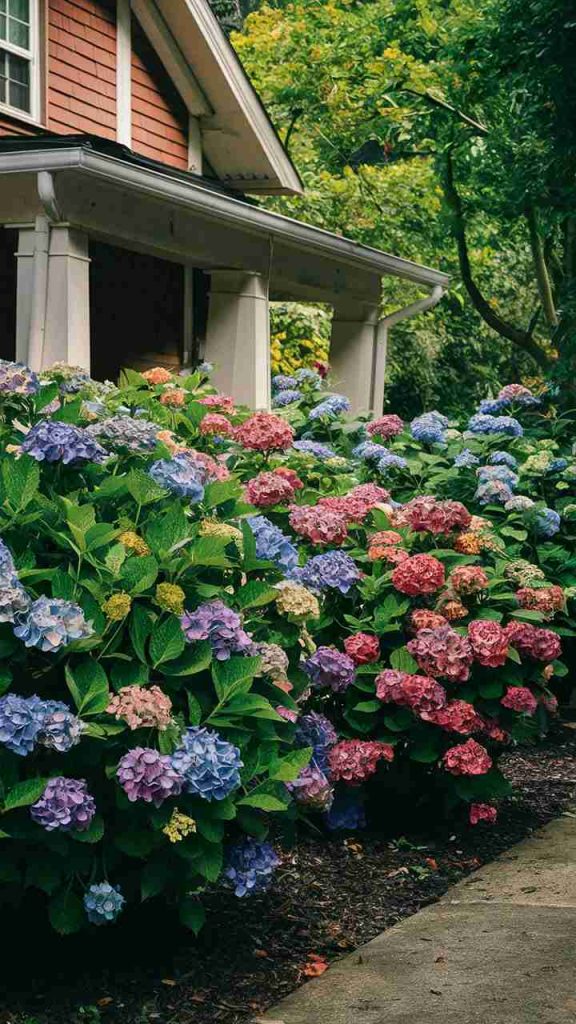
They prefer well-drained soil enriched with organic matter and thrive in partial shade, although they can tolerate full sun in cooler climates. Regular watering is crucial, especially during dry spells, to keep the flowers vibrant and the foliage lush.
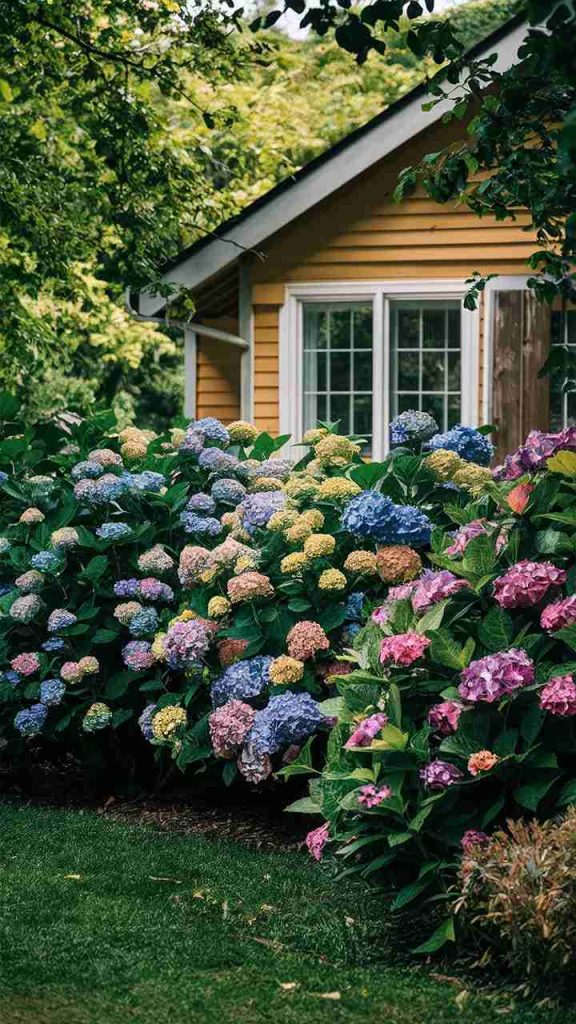
One of the unique features of some Hydrangea varieties is their ability to change flower color based on the soil’s pH level. Acidic soils yield blue flowers, while alkaline soils produce pink blooms. This adaptability allows for a customized look that can complement your home’s exterior color scheme.
3. Azalea
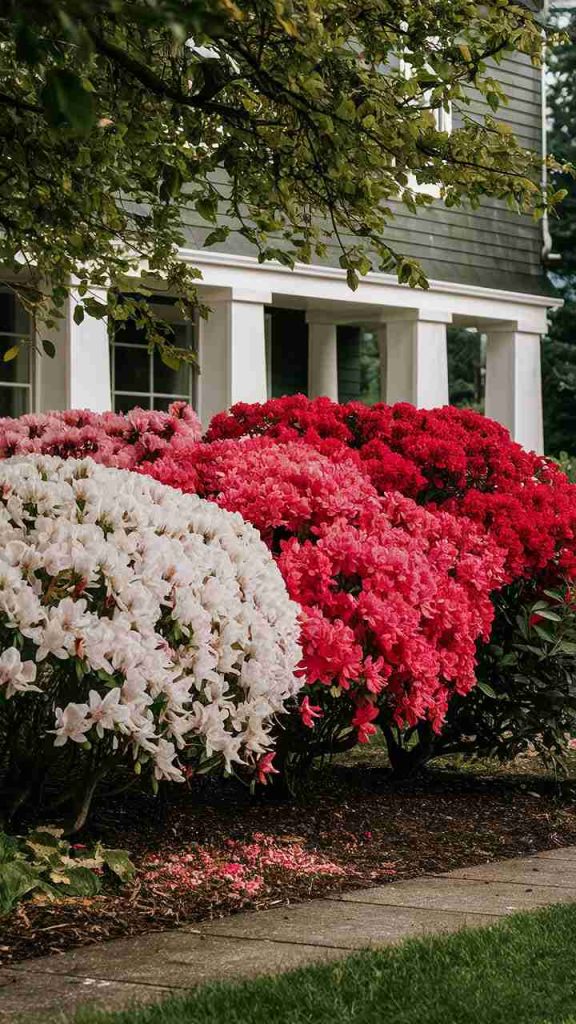
Azaleas are renowned for their vibrant spring blooms, which range in color from white to deep red. These shrubs are a favorite in many gardens due to their showy flowers and attractive foliage. Azaleas can grow in both sun and partial shade, though they prefer a bit of morning sunlight with afternoon shade to protect them from intense heat.
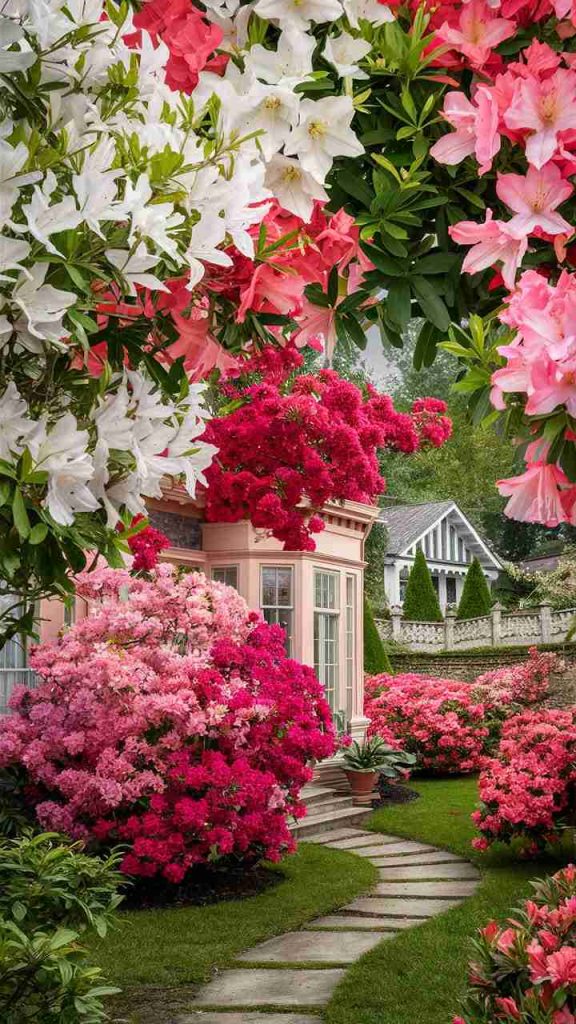
Azaleas thrive in acidic, well-drained soil and benefit from a layer of mulch to retain moisture and keep the roots cool. Pruning after flowering helps maintain their shape and encourages more prolific blooming in the next season.
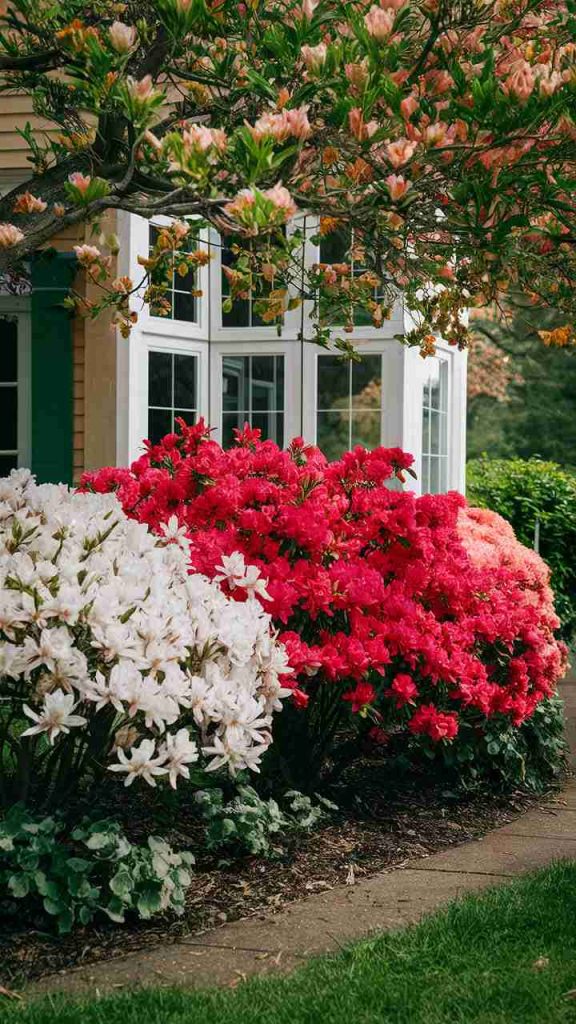
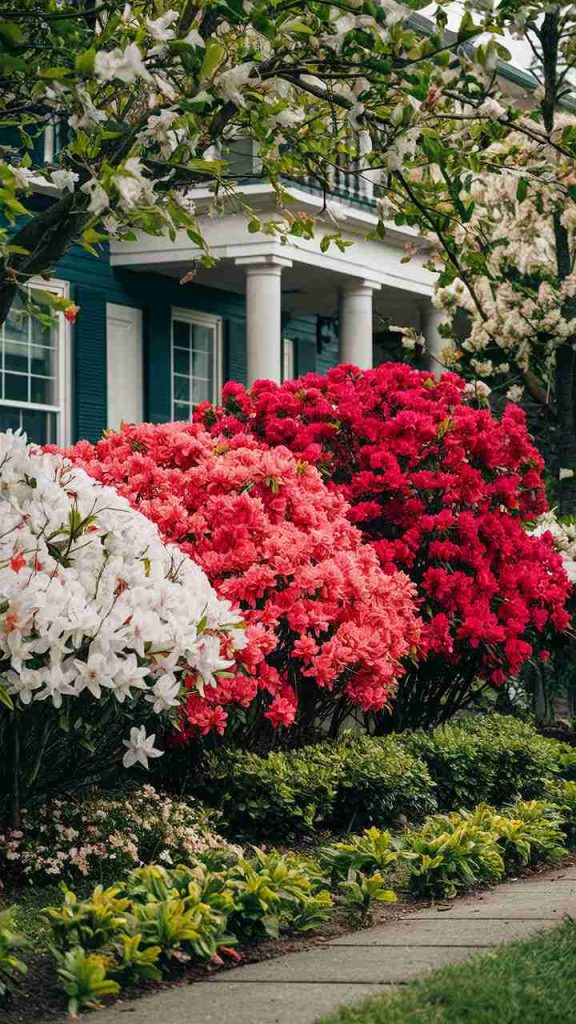
Besides their visual appeal, Azaleas provide a delightful fragrance that can enhance your outdoor experience. With varieties that range from compact to larger sizes, they can be used in various garden designs, from foundation plantings to mixed borders.
4. Rhododendron
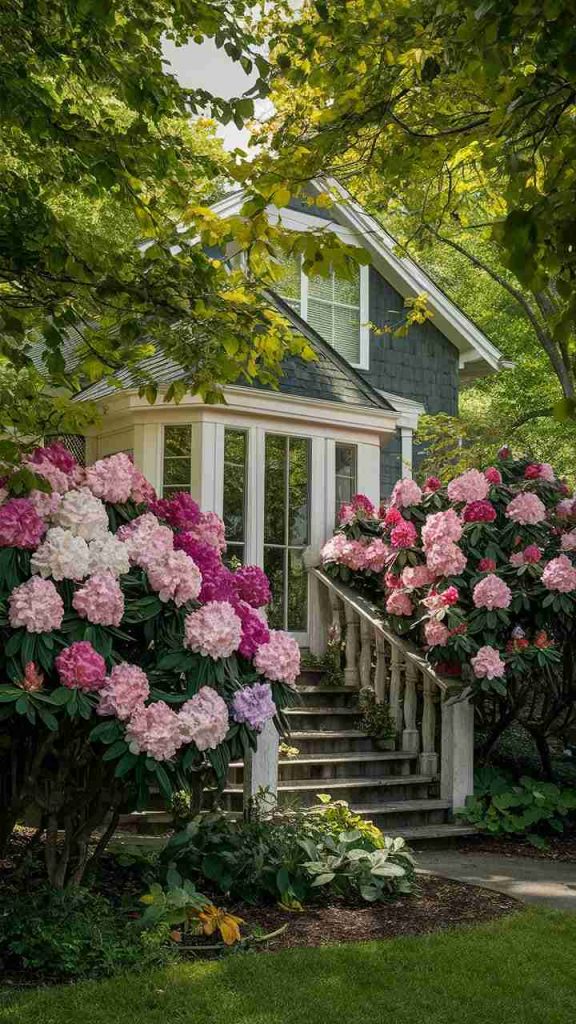
Closely related to Azaleas, Rhododendrons are another excellent choice for adding a burst of color to your front yard. They boast large, showy flowers that bloom in spring and early summer, available in a spectrum of colors including pink, purple, white, and yellow.
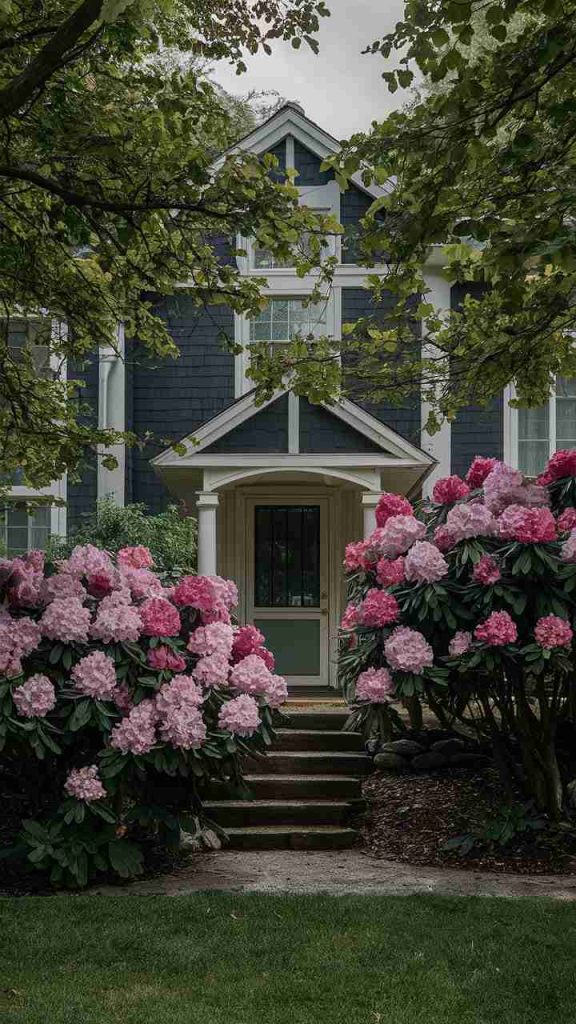
Rhododendrons thrive in cool, moist environments with well-drained, acidic soil. They prefer dappled sunlight, making them perfect for planting under trees or in areas with partial shade. Regular watering is essential, especially during dry periods, to ensure healthy growth and vibrant blooms.
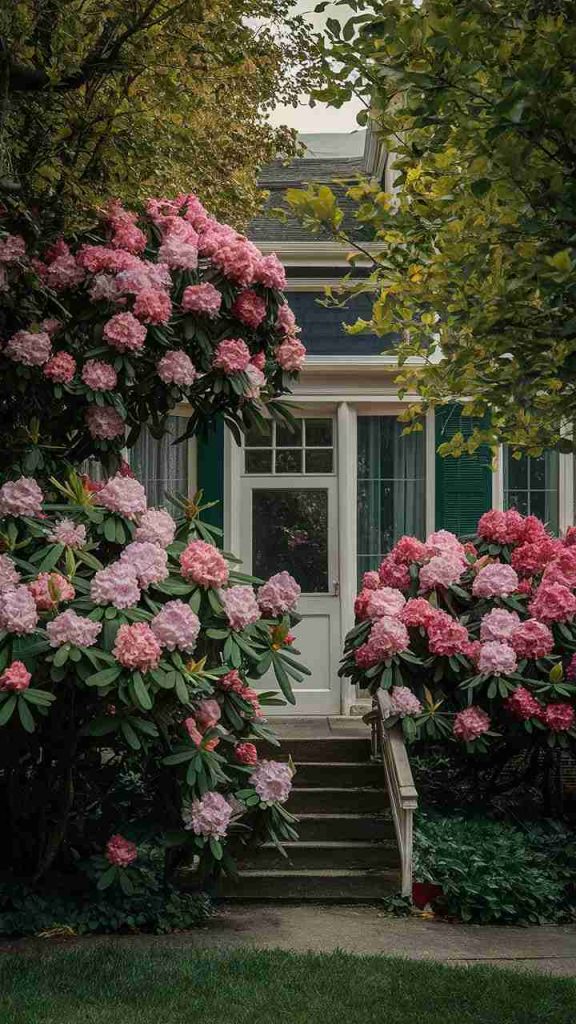
These shrubs can grow quite large, so they are ideal for creating dramatic focal points or as part of a larger garden bed. The evergreen varieties provide year-round interest, with their glossy green leaves adding structure and texture to your landscape even when not in bloom.
5. Spirea
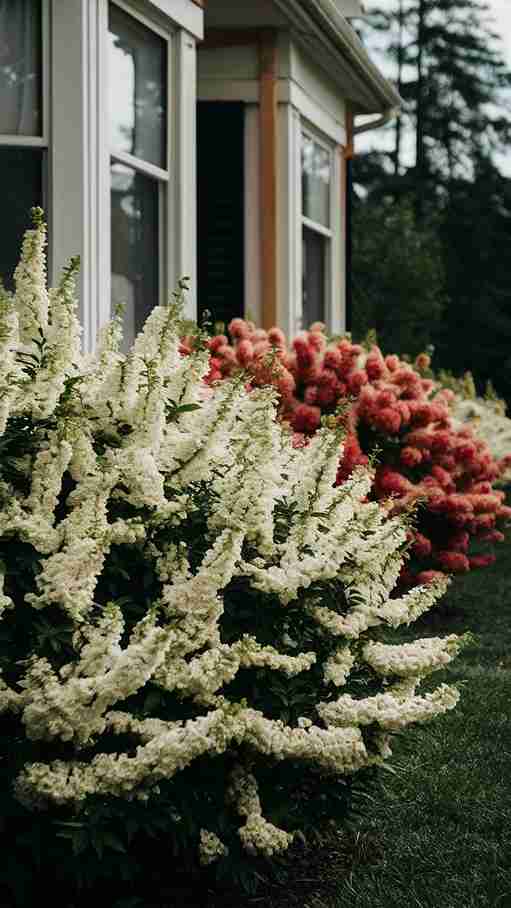
Spirea is a versatile and easy-to-grow shrub known for its graceful, arching branches and profusion of small flowers. These deciduous shrubs bloom in late spring to summer, offering clusters of white, pink, or red flowers that attract pollinators like bees and butterflies.
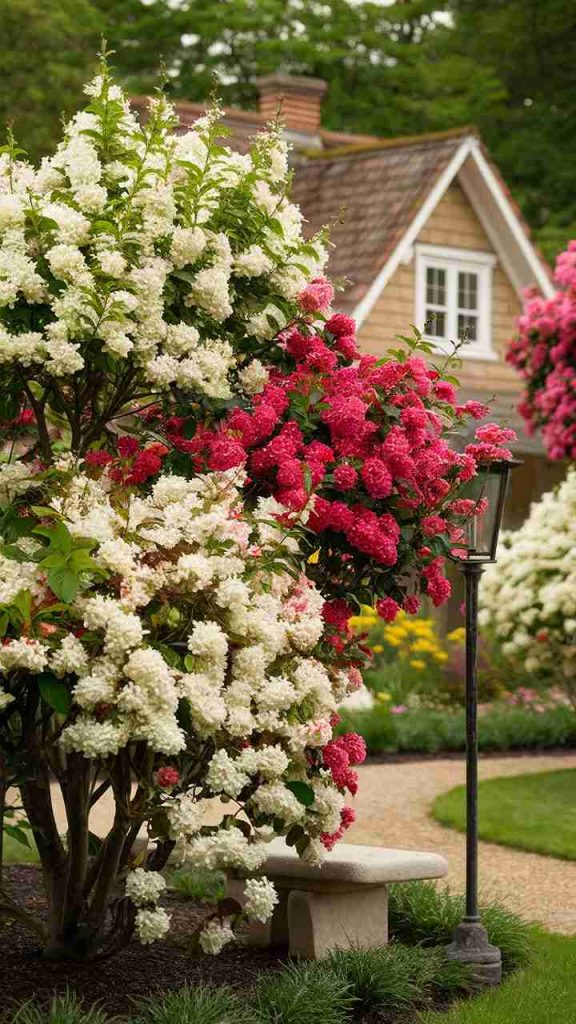
Spirea prefers full sun to partial shade and adapts well to various soil types, as long as they are well-drained. It’s a low-maintenance plant that requires minimal pruning, typically just a light trim after flowering to maintain its shape and encourage new growth.
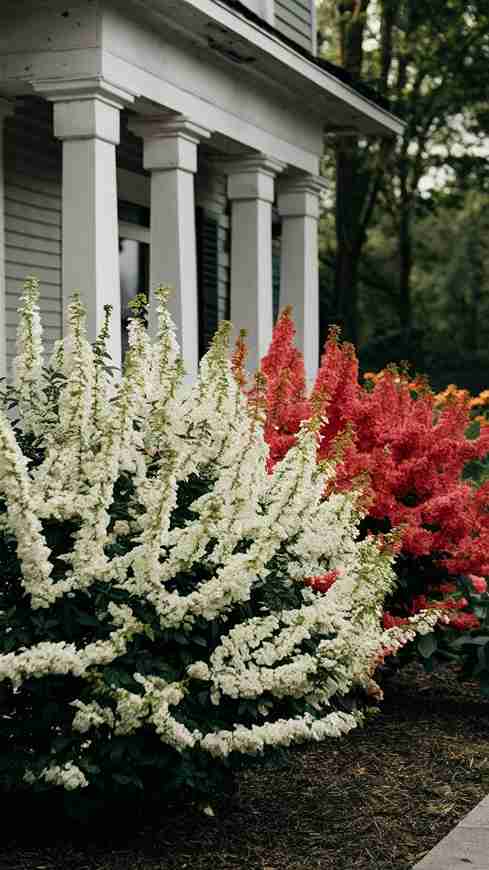
Spirea’s foliage is also a highlight, with some varieties offering striking fall colors that can range from yellow to orange and red. This multi-season interest makes it a valuable addition to any front yard, providing beauty and color from spring through autumn.
6. Forsythia
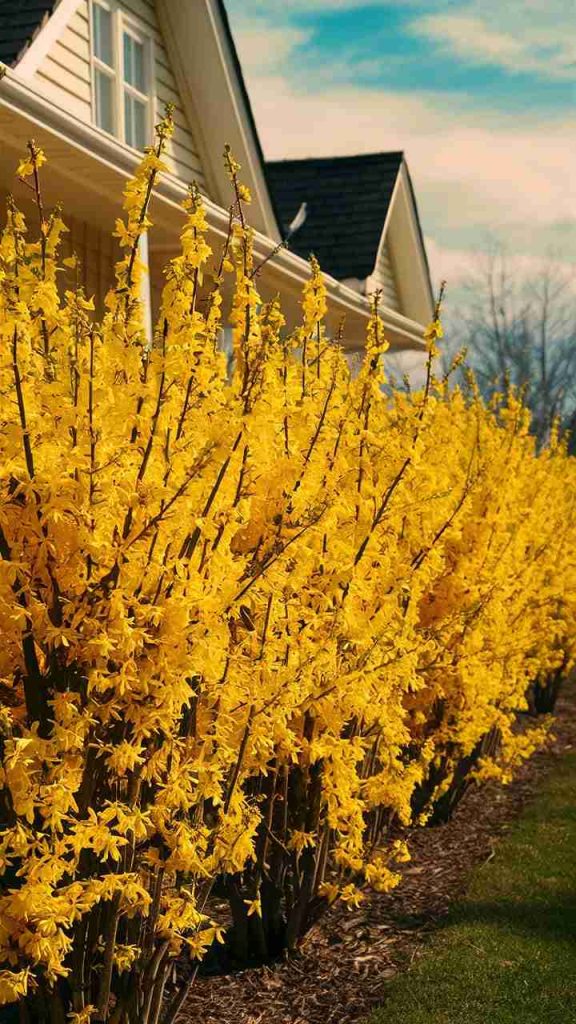
Forsythia is one of the first shrubs to bloom in spring, signaling the end of winter with its bright yellow flowers. This deciduous shrub is known for its fast growth and ability to create a stunning display in early spring before most other plants have started to awaken.
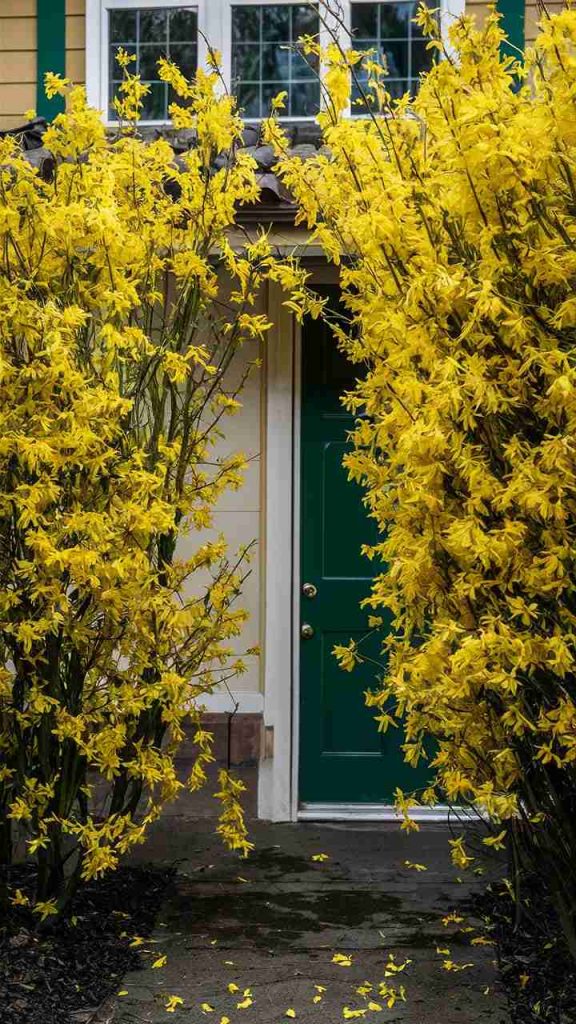
Forsythia thrives in full sun and can tolerate a variety of soil conditions, though it prefers well-drained soil. It’s a hardy plant that requires minimal care once established, making it an excellent choice for busy homeowners.
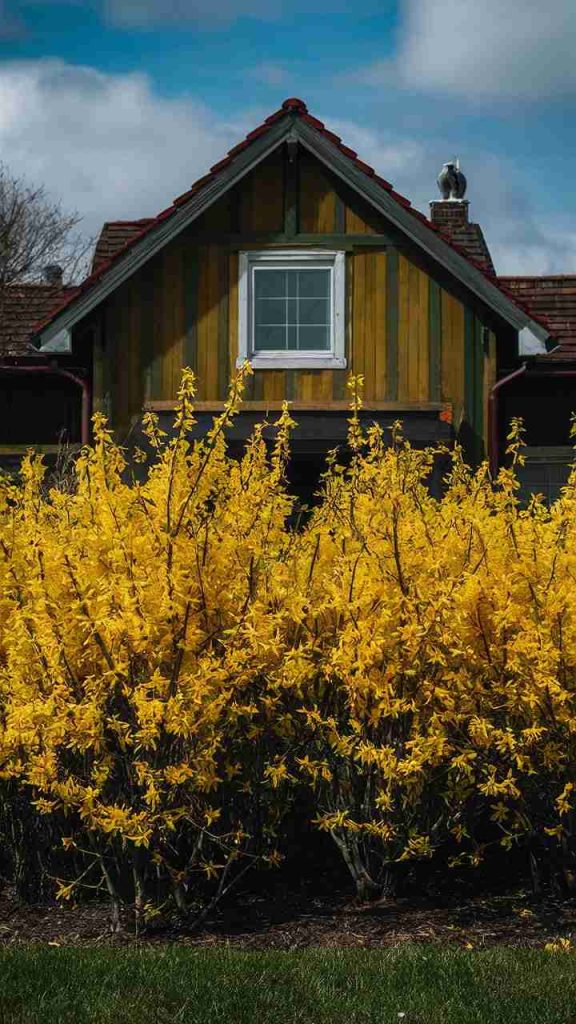
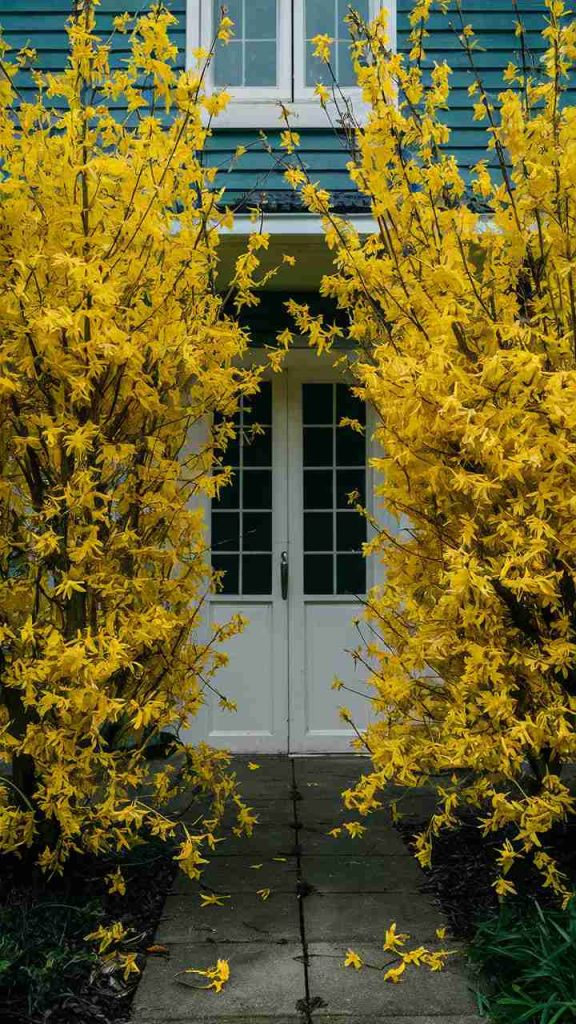
Pruning after flowering is essential to maintain its shape and encourage more prolific blooming. Forsythia can be used as a standalone specimen, in mixed borders, or even as a natural hedge to provide privacy and a splash of color in the early months of the year.
7. Rose of Sharon (Hibiscus syriacus)
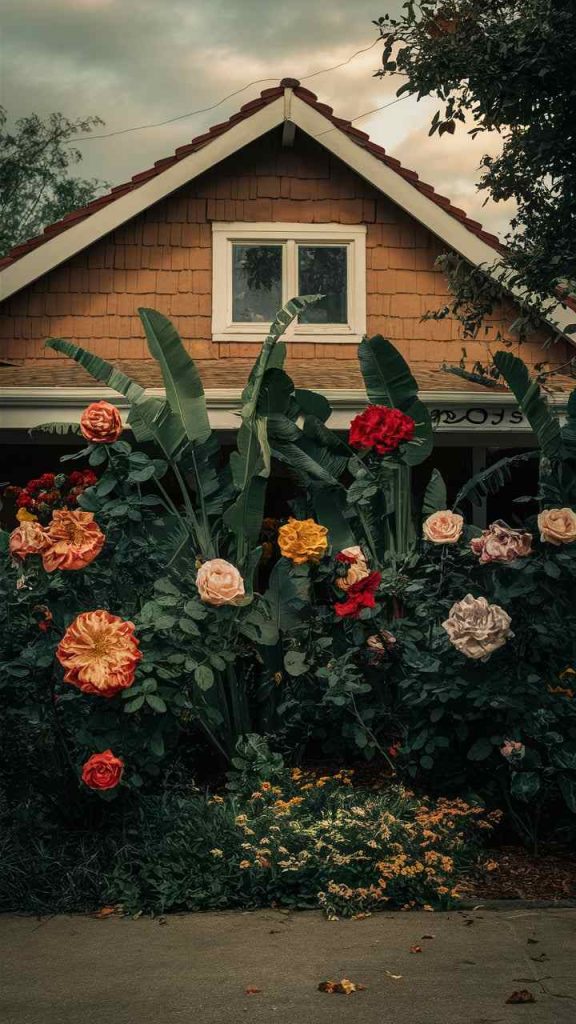
Rose of Sharon is a hardy, deciduous shrub that produces large, tropical-looking flowers from mid-summer to fall. The blooms come in a variety of colors, including white, pink, purple, and blue, often with a contrasting eye in the center.
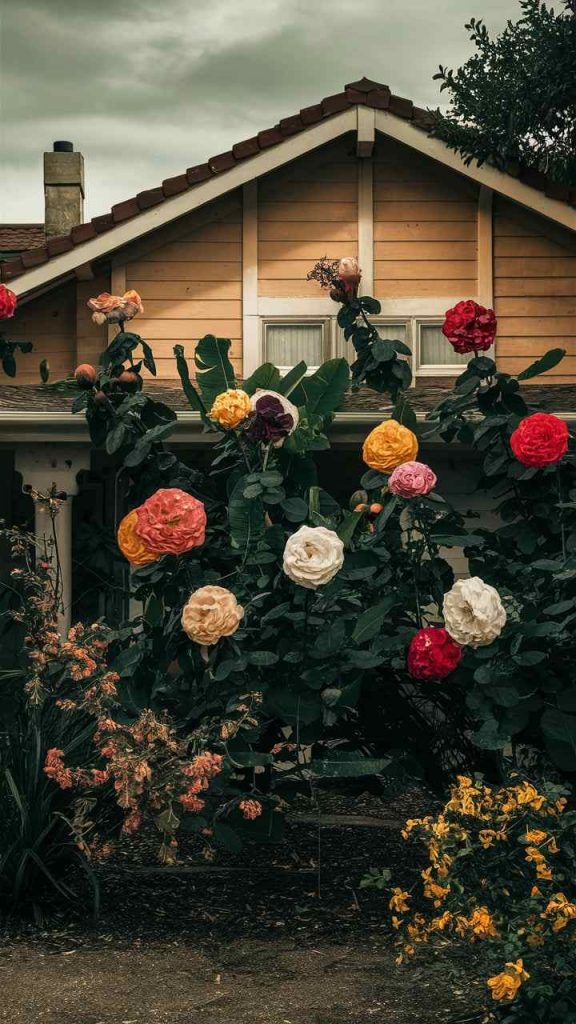
This shrub thrives in full sun and well-drained soil, making it a great choice for sunny front yards. Rose of Sharon is relatively low-maintenance, requiring occasional pruning to shape and remove any dead or damaged branches.
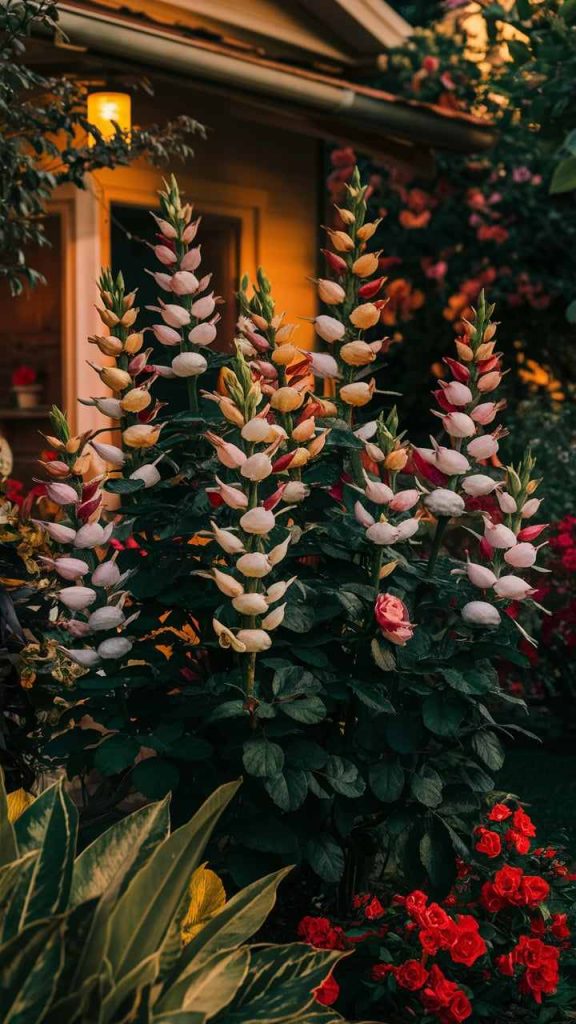
The long blooming period and showy flowers make Rose of Sharon an excellent choice for adding late-season color to your landscape. It can be used as a focal point, in mixed borders, or as a hedge. The flowers attract hummingbirds and butterflies, adding an element of wildlife interest to your garden.
8. Lilac (Syringa)
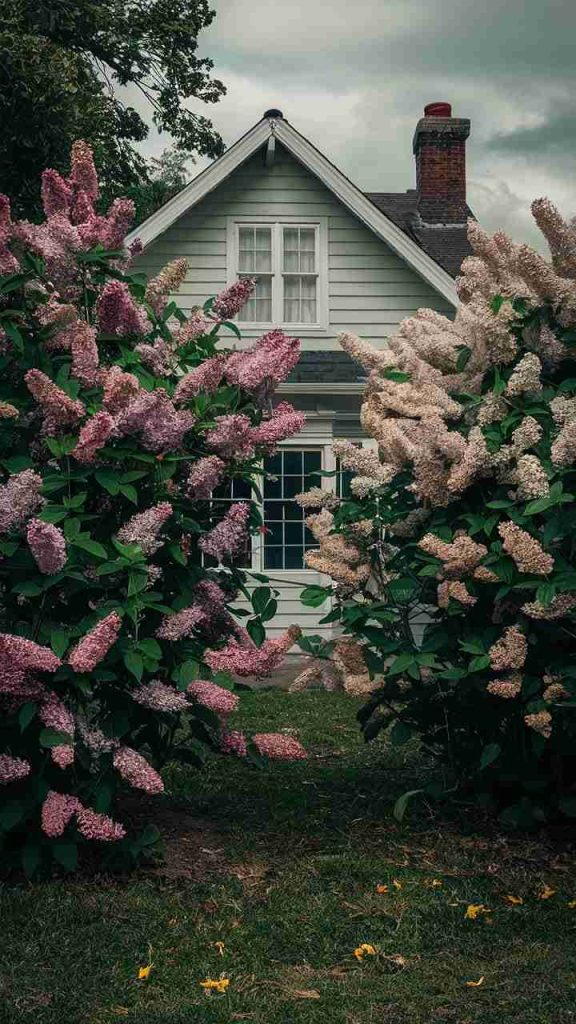
Lilacs are cherished for their fragrant, cone-shaped flower clusters that appear in late spring. These deciduous shrubs are available in a range of colors, including purple, pink, white, and blue. The sweet fragrance of Lilac blossoms is a nostalgic scent that can evoke memories of childhood gardens.
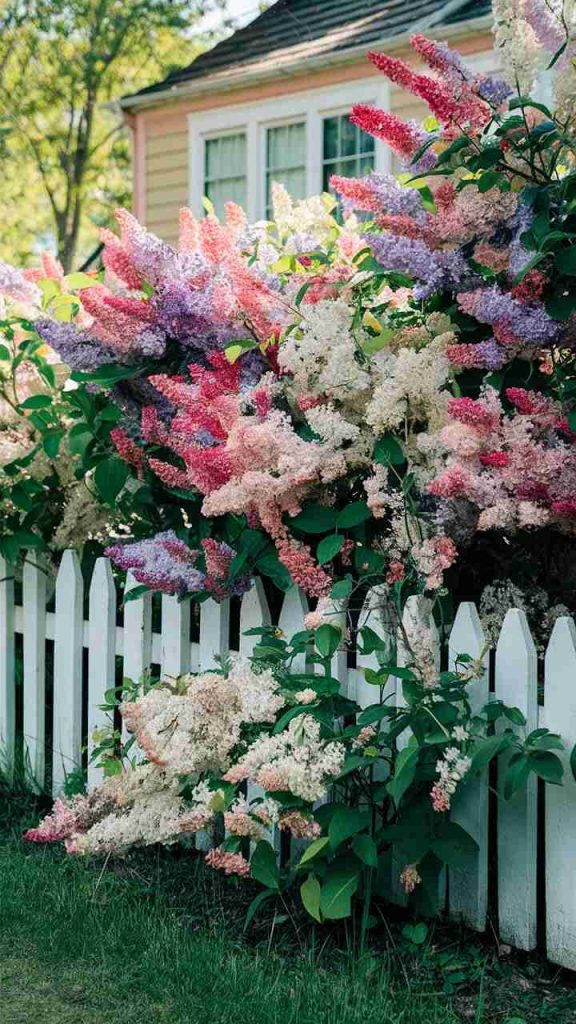
Lilacs thrive in full sun and well-drained soil, preferring slightly alkaline conditions. Regular pruning after flowering helps maintain their shape and encourages more vigorous blooming in subsequent years. They can grow quite tall, so they are ideal for creating natural screens or as a backdrop in a mixed border.
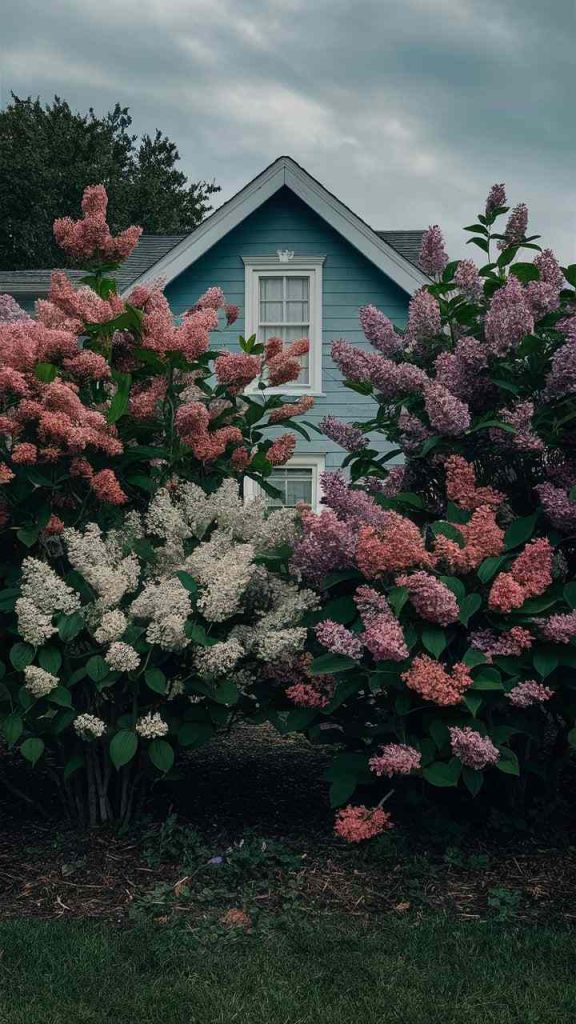
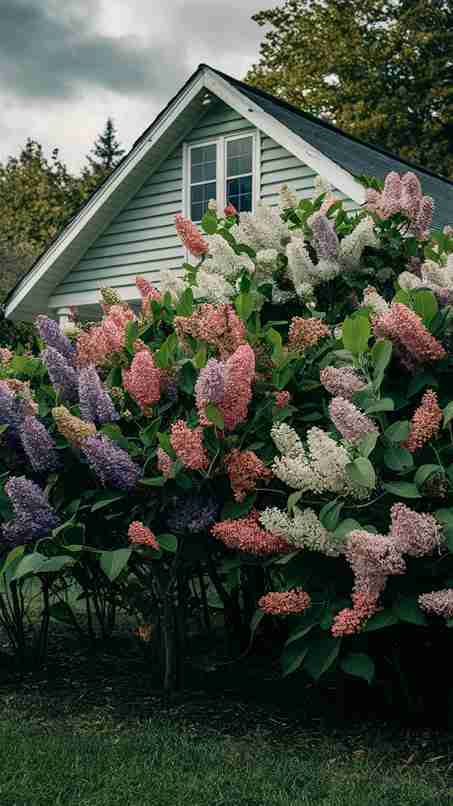
Besides their beautiful flowers, Lilacs have attractive, heart-shaped leaves that add texture to your garden even after the blooms have faded. The combination of fragrance, color, and foliage makes Lilacs a valuable addition to any front yard landscape.
9. Holly (Ilex)
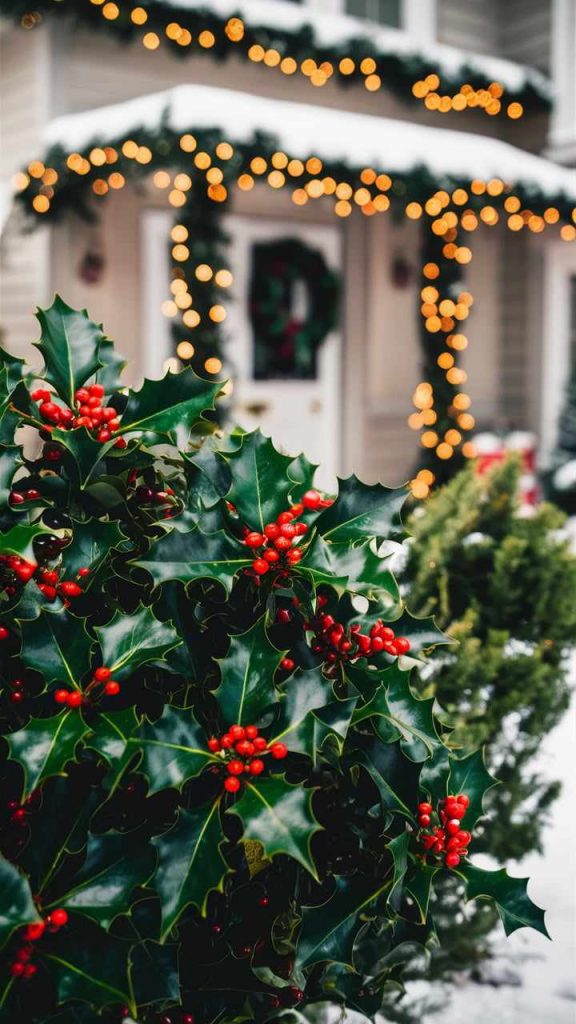
Holly is a versatile evergreen shrub known for its glossy, spiny leaves and bright red berries that appear in winter. This combination of foliage and berries makes Holly a popular choice for holiday decorations and winter interest in the garden.
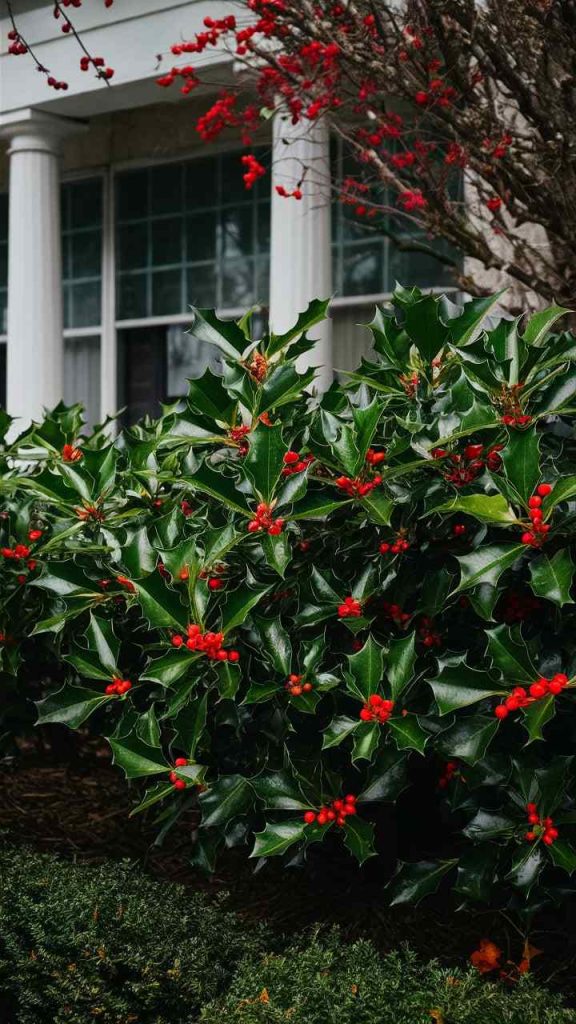
Holly thrives in full sun to partial shade and prefers well-drained, slightly acidic soil. It requires minimal maintenance, though occasional pruning can help shape the plant and promote healthy growth.
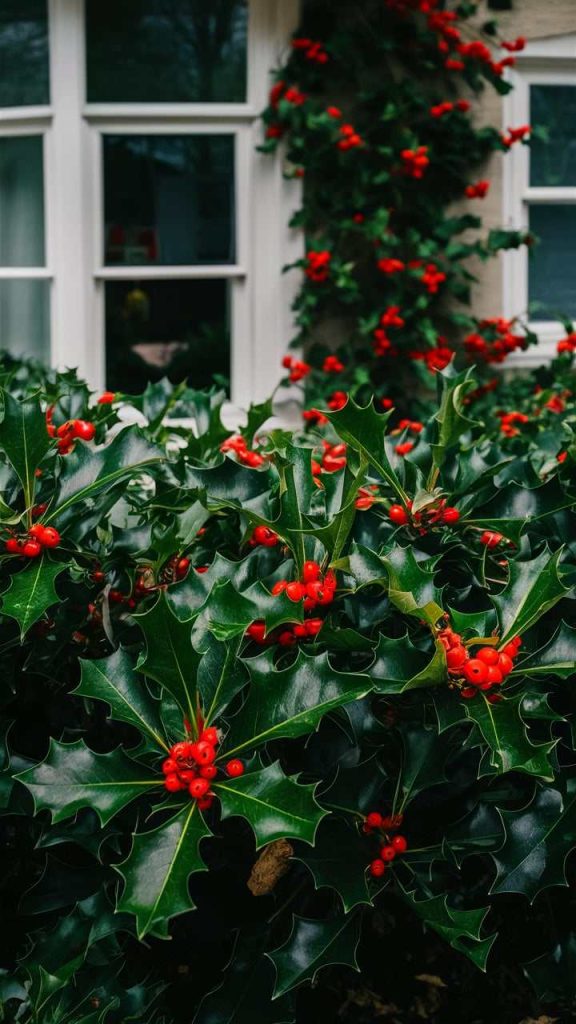
There are many varieties of Holly, ranging from dwarf forms suitable for small gardens to larger types that can be used as privacy screens or hedges. The berries attract birds, adding an element of wildlife interest to your yard. Holly’s year-round greenery and winter berries provide continuous visual appeal, making it a valuable addition to any landscape.
10. Butterfly Bush (Buddleia)
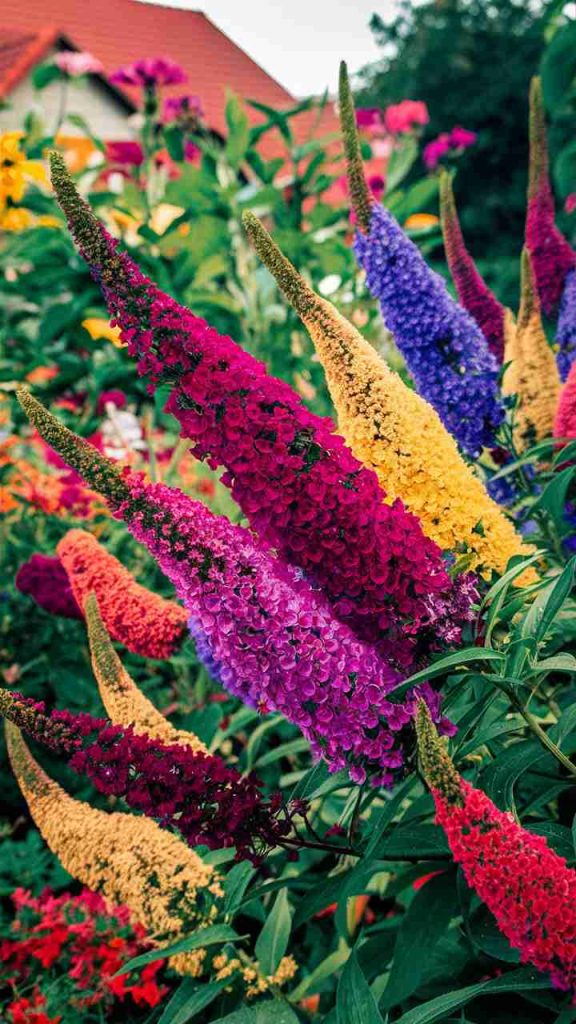
Butterfly Bush is renowned for its long, spiked flower clusters that attract butterflies and hummingbirds. Blooming from summer to fall, these deciduous shrubs come in a variety of colors, including purple, pink, white, and yellow.
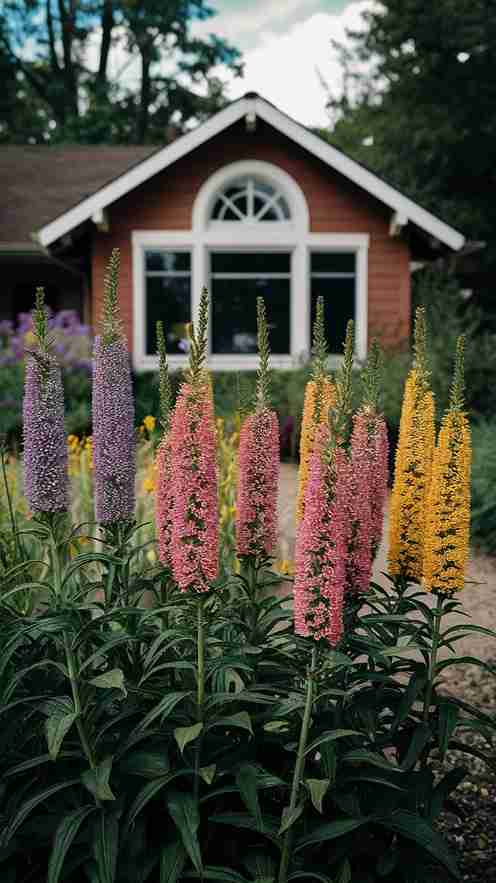
Butterfly Bush prefers full sun and well-drained soil, making it an excellent choice for sunny front yards. It’s a fast-growing shrub that requires minimal care, though deadheading spent flowers can encourage more blooms and prevent self-seeding.
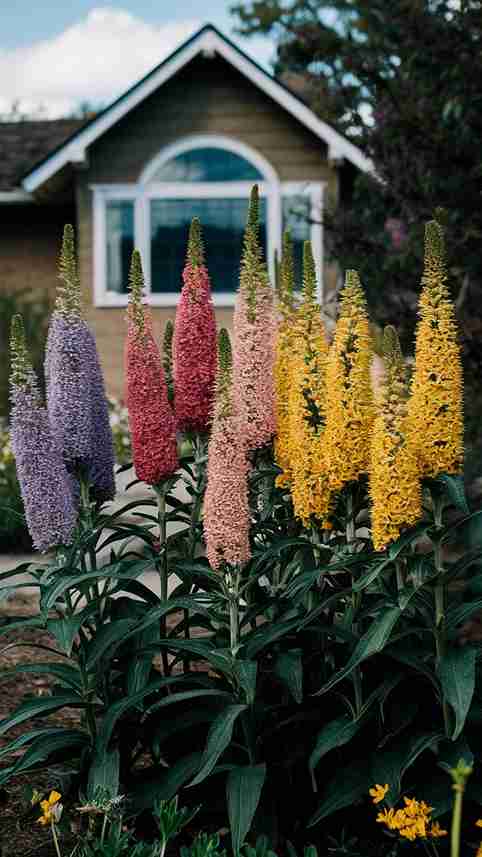
The fragrant flowers and attractive foliage make Butterfly Bush a standout in any garden. It’s particularly effective in mixed borders or as a focal point, where its height and vibrant blooms can create a dramatic impact. The added benefit of attracting pollinators makes this shrub a valuable addition to any landscape.
11. Camellia
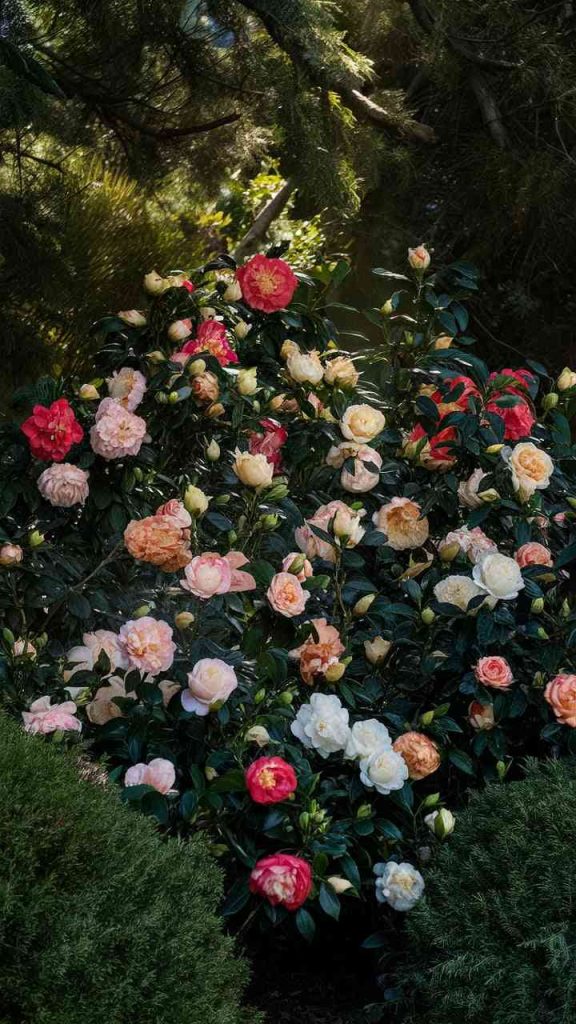
Camellias are prized for their stunning, rose-like flowers that bloom in fall, winter, or early spring, depending on the variety. These evergreen shrubs have glossy, dark green leaves that provide year-round interest and a beautiful backdrop for the vibrant blooms.
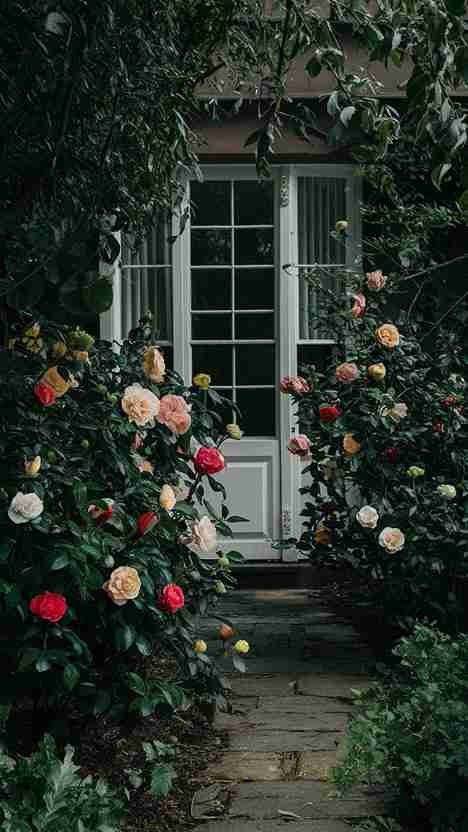
Camellias thrive in partial shade and well-drained, acidic soil. They require regular watering, especially during dry spells, to keep the soil consistently moist. Mulching helps retain moisture and keep the roots cool.
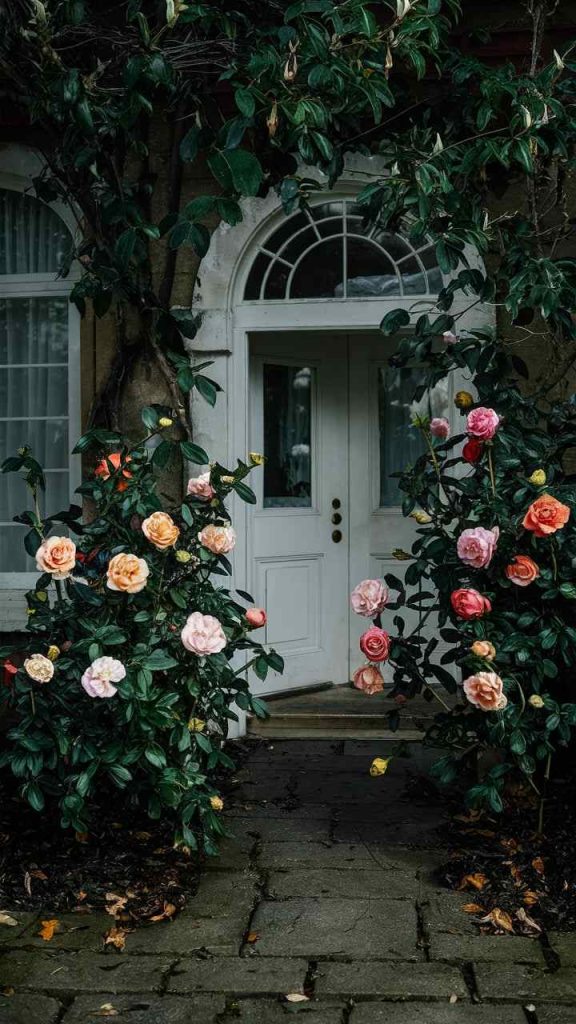
With their long blooming period and striking flowers, Camellias can add a touch of elegance to your front yard. They can be used as specimen plants, in mixed borders, or as part of a woodland garden. The combination of evergreen foliage and seasonal flowers makes Camellias a versatile and attractive choice for any landscape.
12. Viburnum
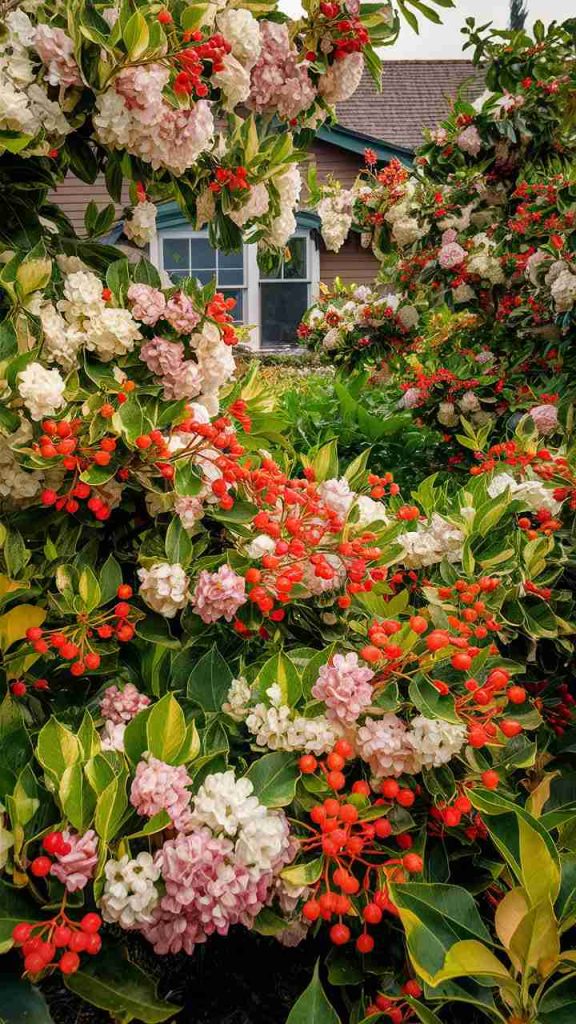
Viburnum is a diverse group of shrubs known for their attractive flowers, colorful berries, and versatile growth habits. Blooming in spring or summer, Viburnums produce clusters of white, pink, or cream flowers, followed by berries that can range in color from red to blue and black.
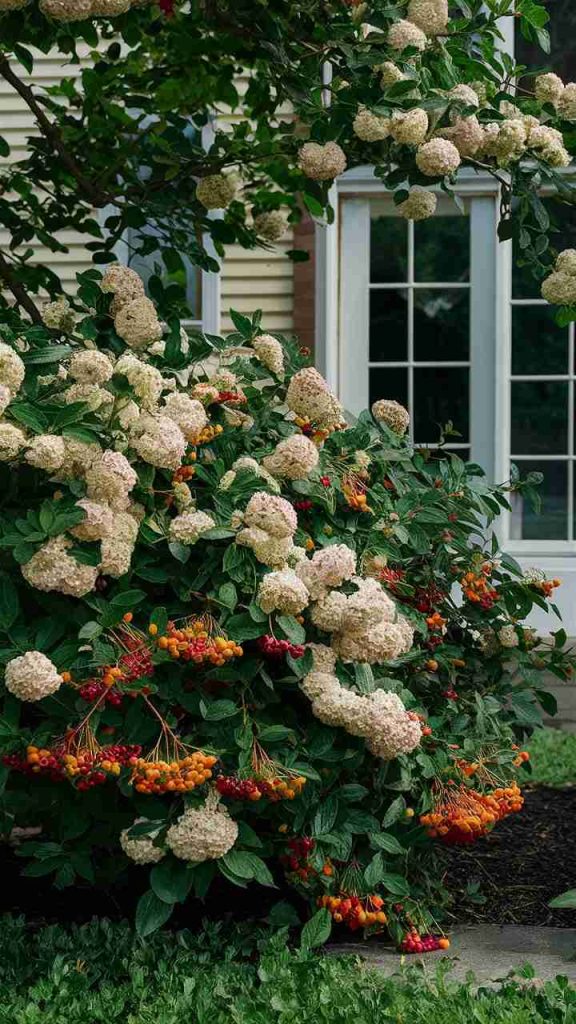
These shrubs thrive in full sun to partial shade and prefer well-drained soil enriched with organic matter. Viburnum is relatively low-maintenance, requiring only occasional pruning to maintain shape and remove dead or damaged branches.
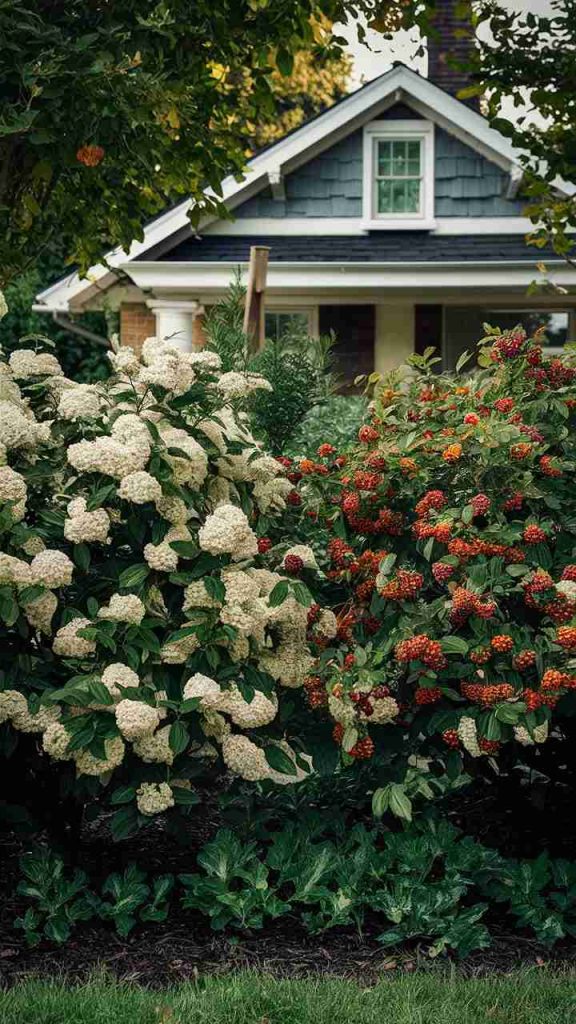
Viburnums offer year-round interest with their changing foliage colors, flowers, and berries. They can
be used as foundation plantings, in mixed borders, or as hedges. The flowers attract pollinators, while the berries provide food for birds, adding both beauty and wildlife value to your garden.
13. Japanese Maple (Acer palmatum)
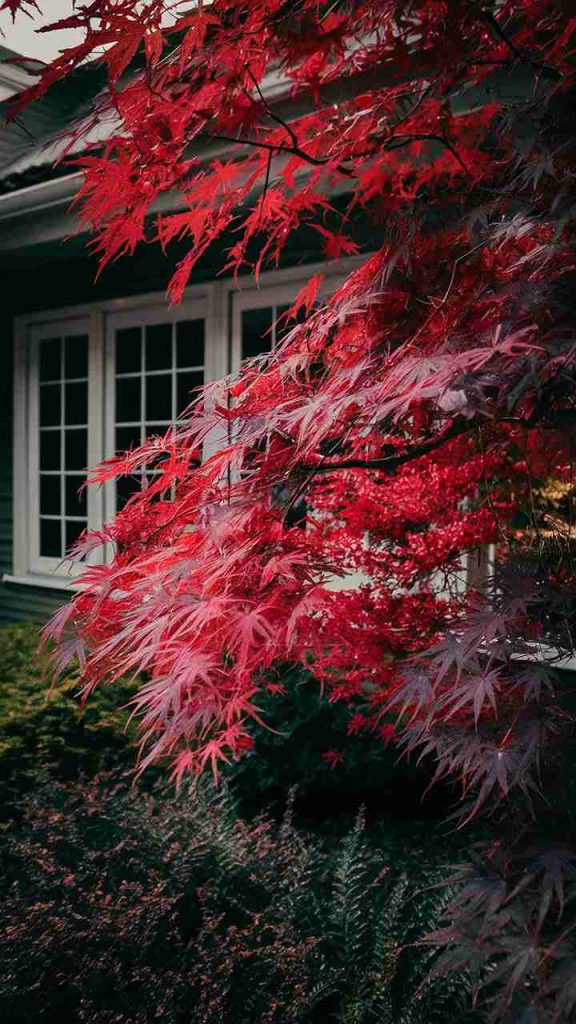
Japanese Maple is a popular ornamental shrub or small tree known for its delicate, lacy leaves and stunning fall color. These deciduous plants offer a variety of leaf shapes and colors, ranging from green to deep red and purple, depending on the variety.
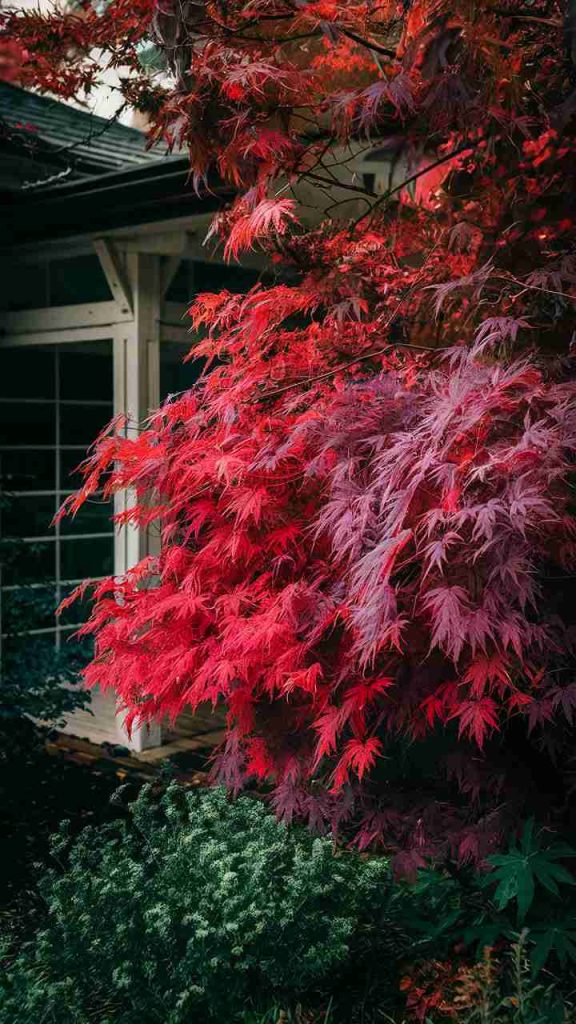
Japanese Maples thrive in partial shade and well-drained soil, preferring a slightly acidic environment. They require regular watering, especially during dry periods, to keep the soil consistently moist. Mulching helps retain moisture and protect the roots.
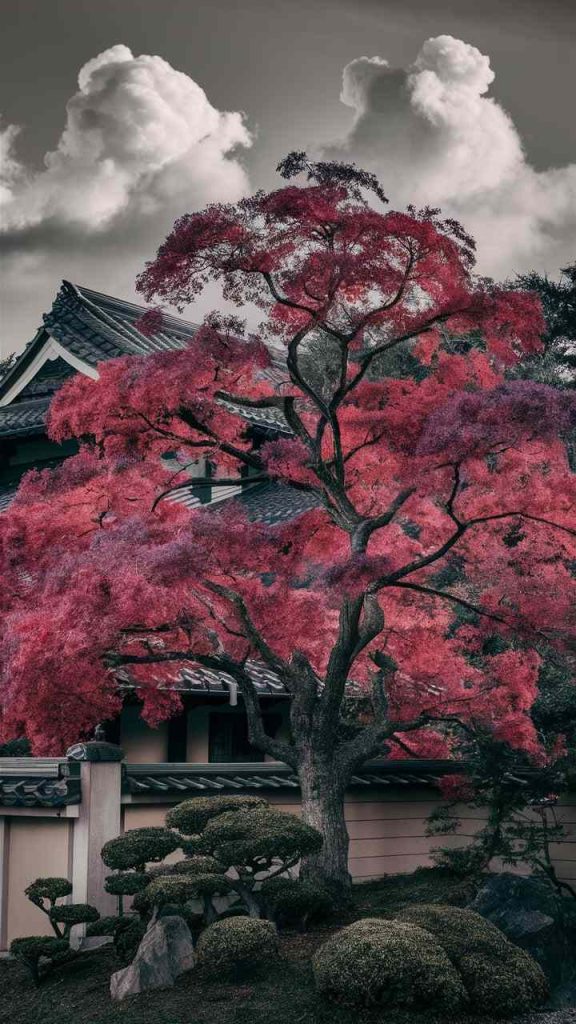
With their elegant form and vibrant foliage, Japanese Maples can serve as focal points in your front yard. They are particularly effective in Asian-inspired gardens, woodland settings, or as part of a mixed border. The changing leaf colors throughout the seasons add continuous visual interest to your landscape.
14. Weigela
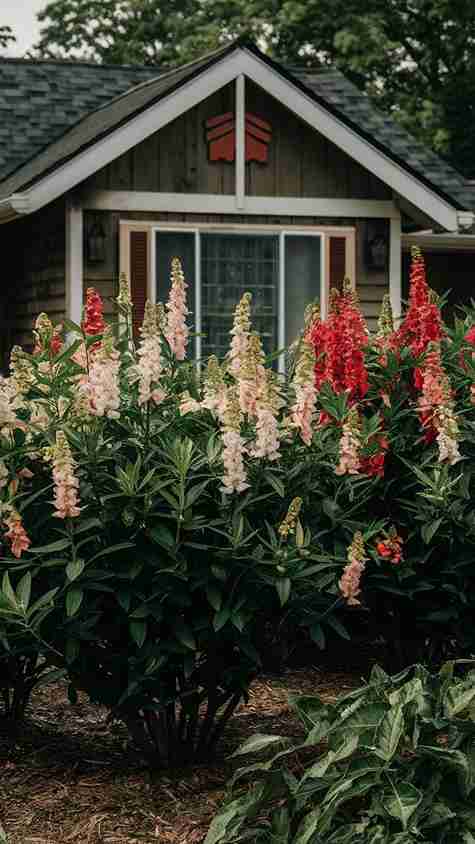
Weigela is a deciduous shrub known for its trumpet-shaped flowers that bloom in late spring to early summer. The flowers come in various shades of pink, red, and white, attracting hummingbirds and butterflies to your garden.
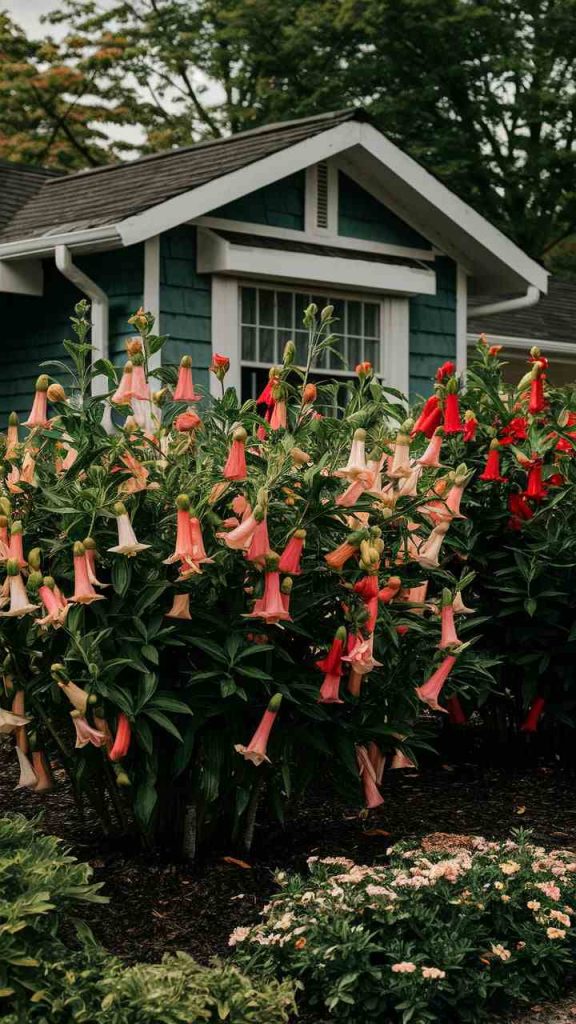
Weigela thrives in full sun to partial shade and prefers well-drained soil. It’s a low-maintenance plant that requires minimal pruning, typically just a light trim after flowering to maintain its shape and encourage new growth.
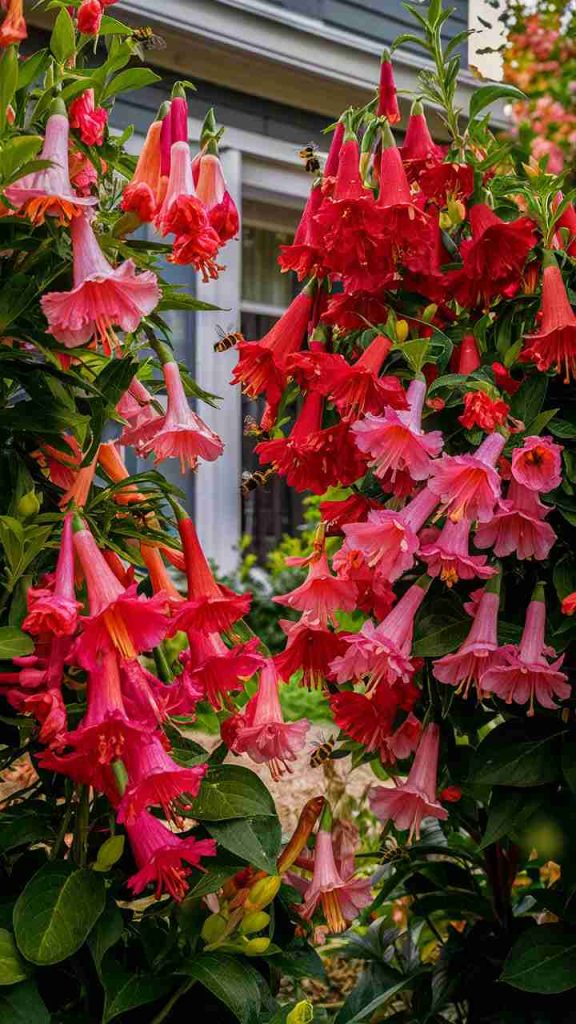
The attractive foliage of Weigela can also provide seasonal interest, with some varieties offering variegated leaves or striking fall colors. This combination of beautiful flowers and foliage makes Weigela a versatile addition to any front yard, whether used in mixed borders, as a specimen plant, or as part of a flowering hedge.
15. Lavender (Lavandula)
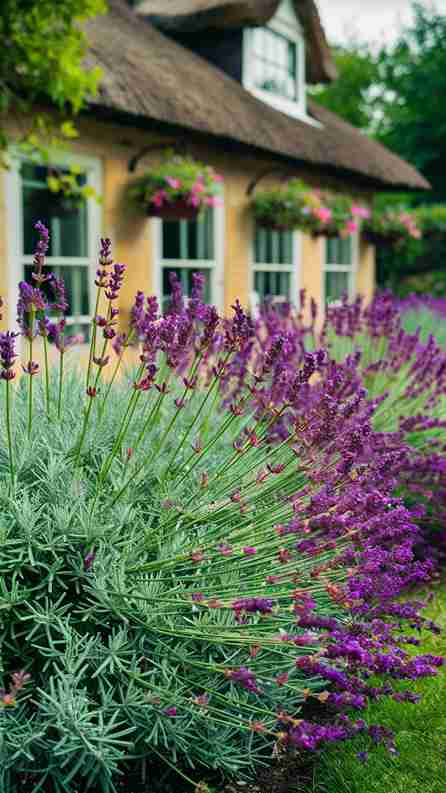
Lavender is a beloved shrub known for its fragrant, purple flower spikes and silvery-green foliage. Blooming in late spring to summer, Lavender not only adds beauty to your garden but also provides a soothing scent that can be enjoyed both outdoors and indoors.
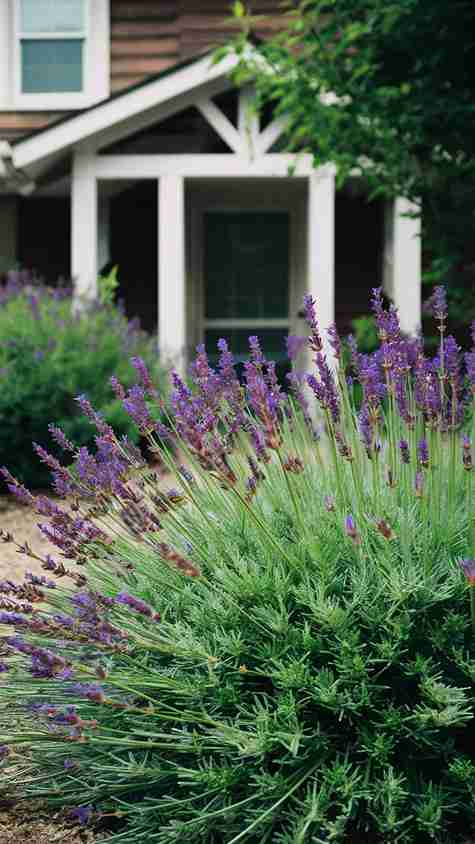
Lavender thrives in full sun and well-drained, sandy soil. It’s drought-tolerant once established, making it an excellent choice for low-maintenance gardens. Pruning after flowering helps maintain its shape and encourages more prolific blooming in the following season.
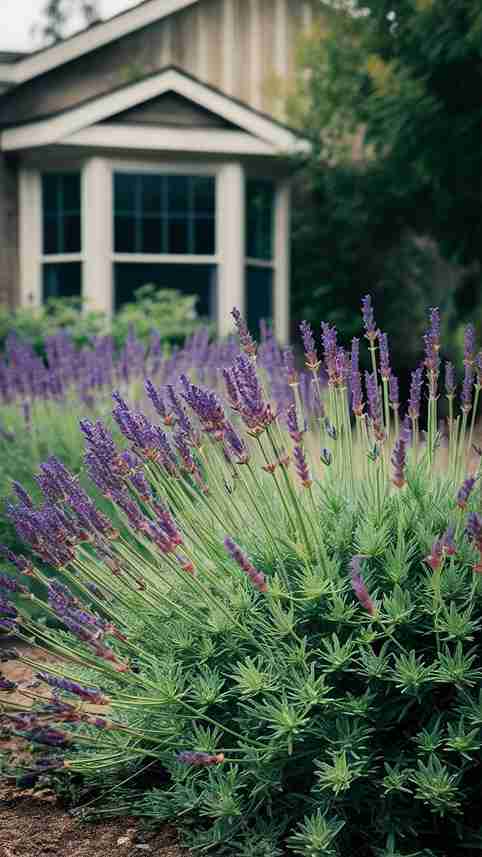
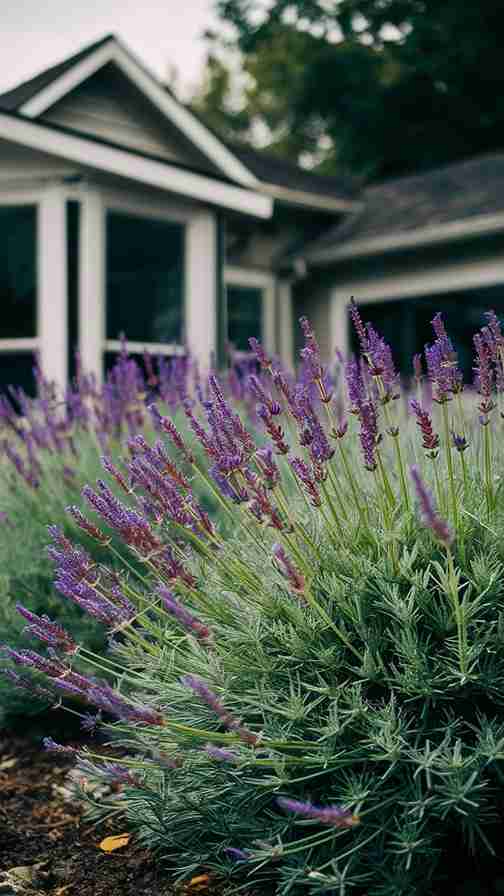
Besides its visual and olfactory appeal, Lavender is also known for its ability to attract pollinators like bees and butterflies. It can be used in various garden settings, from formal borders and cottage gardens to rock gardens and containers. The combination of beauty, fragrance, and versatility makes Lavender a valuable addition to any landscape.
16. Barberry (Berberis)
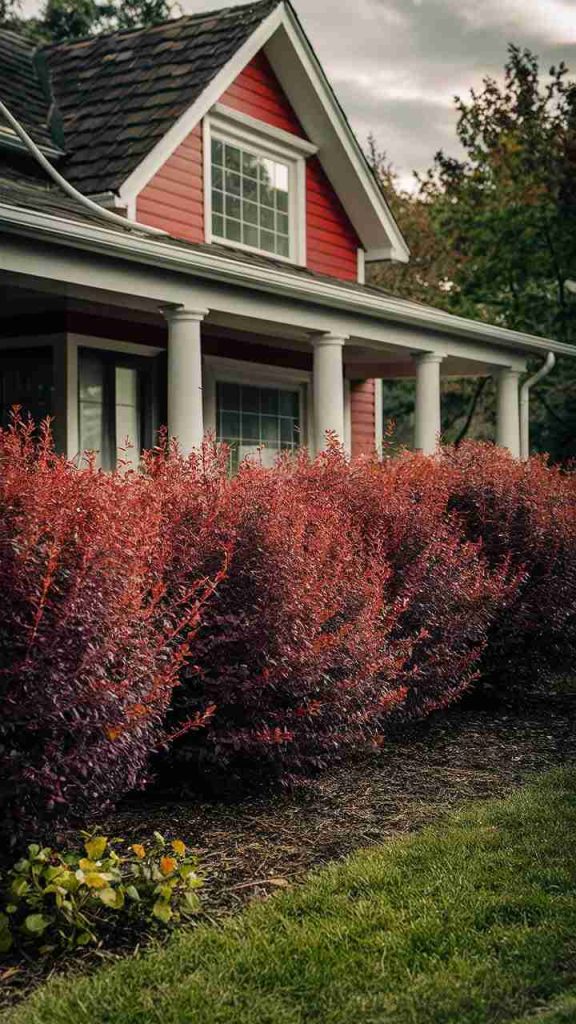
Barberry is a versatile shrub known for its colorful foliage, which can range from green to shades of red, purple, and gold. This deciduous shrub also produces small yellow flowers in spring, followed by red or blue-black berries in fall.
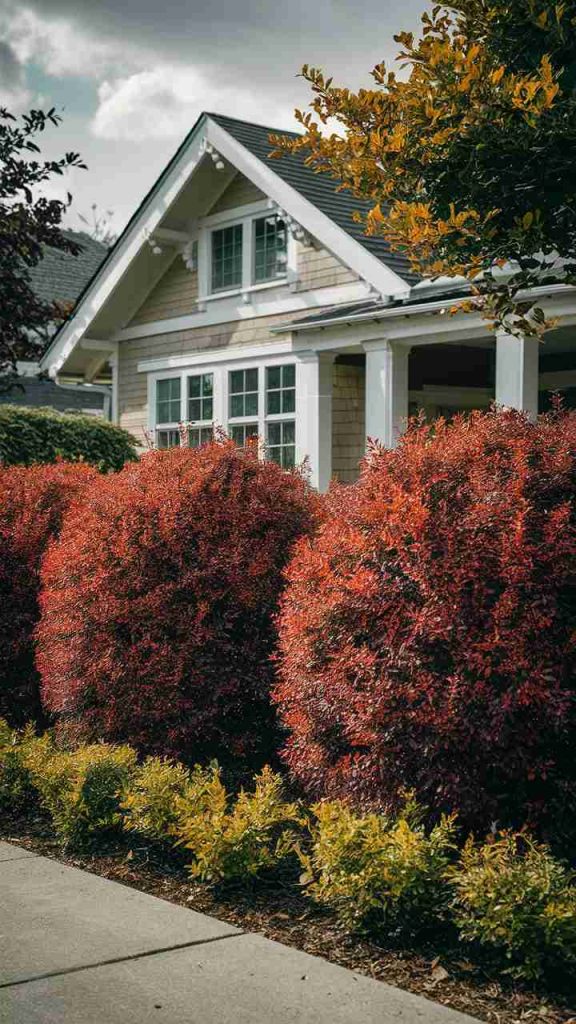
Barberry thrives in full sun to partial shade and prefers well-drained soil. It’s a hardy plant that requires minimal maintenance, making it an excellent choice for busy homeowners. Pruning can help maintain its shape and encourage new growth.
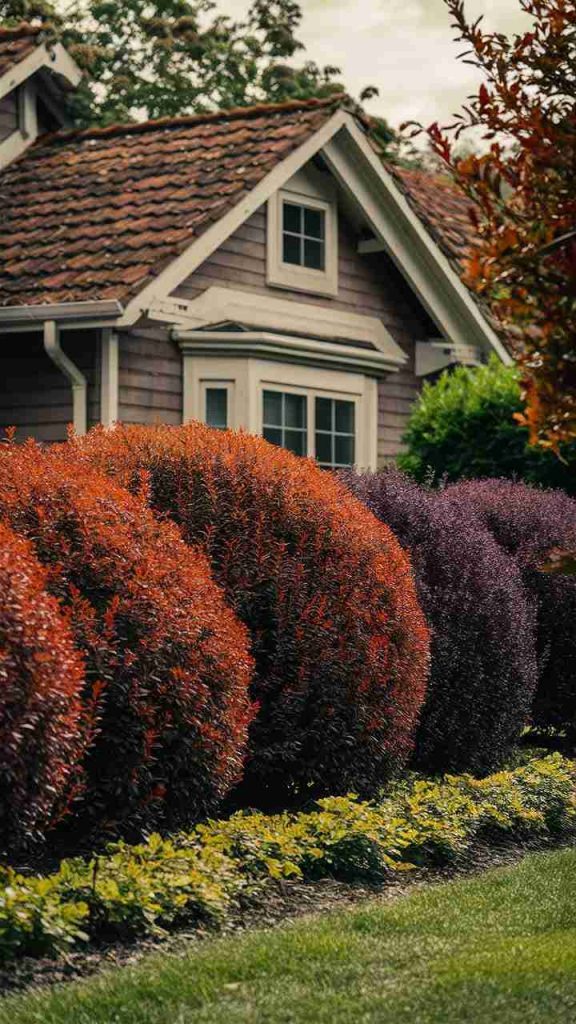
The thorny branches of Barberry make it an effective barrier plant, providing security as well as visual interest. It’s particularly useful in mixed borders, as a hedge, or as a standalone specimen. The vibrant foliage colors and seasonal berries add year-round interest to your front yard, making Barberry a versatile and attractive choice.
17. Fothergilla
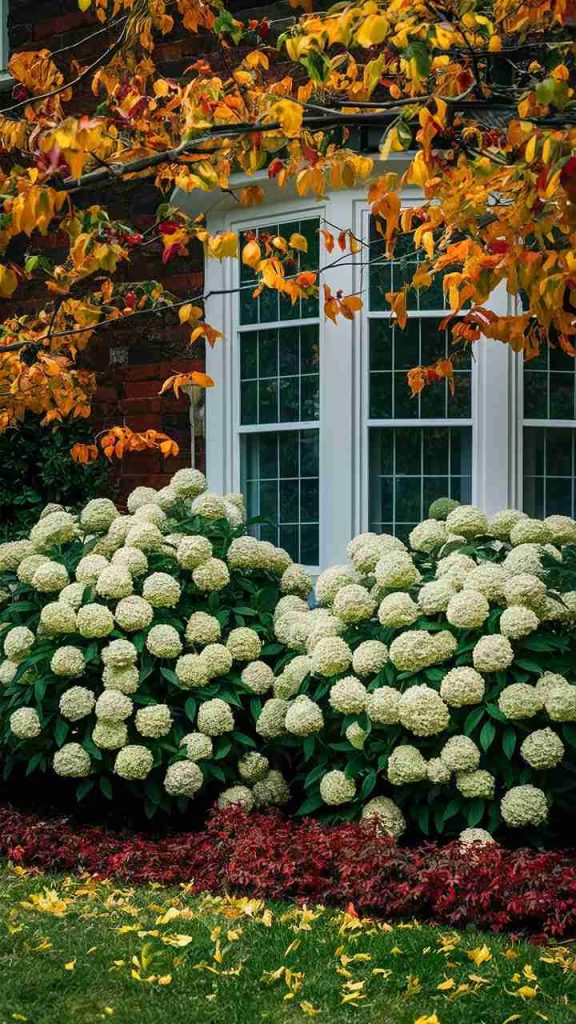
Fothergilla is a deciduous shrub known for its fragrant, bottlebrush-like flowers that appear in spring. The blooms are typically white, creating a striking contrast against the dark green foliage. In fall, the leaves turn vibrant shades of yellow, orange, and red, providing stunning seasonal color.
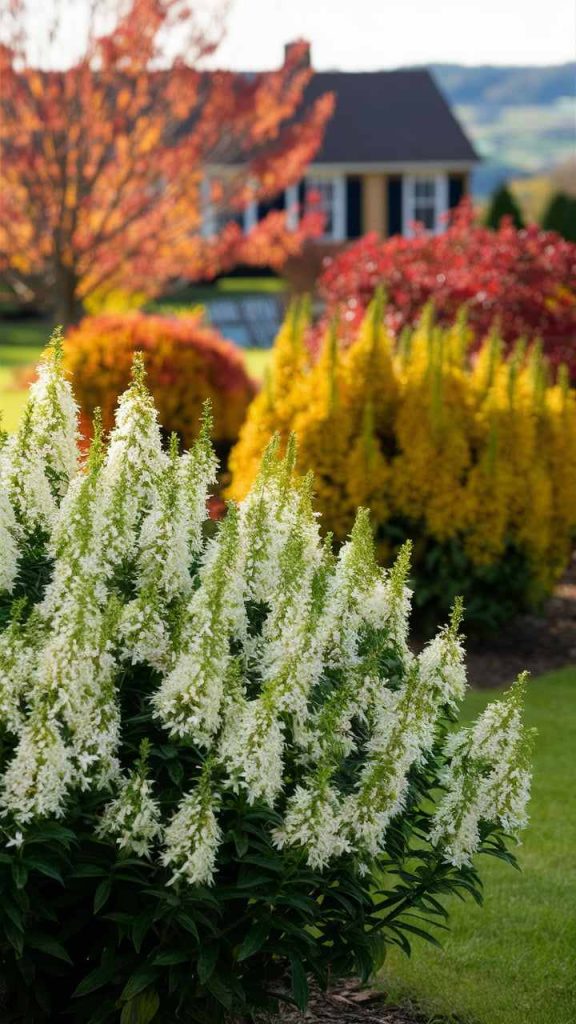
Fothergilla thrives in full sun to partial shade and prefers well-drained, acidic soil. It’s a low-maintenance plant that requires minimal pruning, typically just to remove dead or damaged branches.
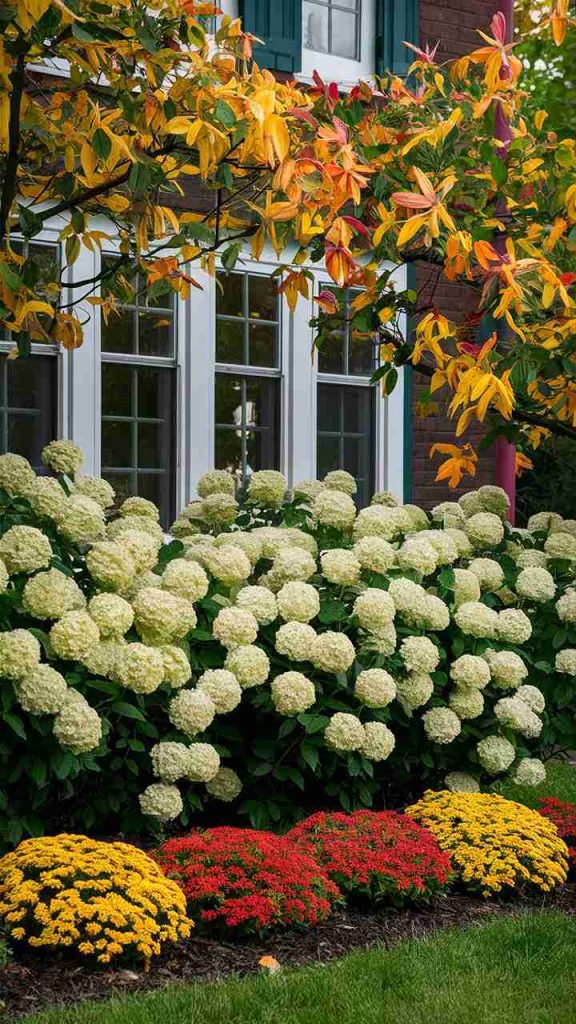
With its unique flowers and colorful foliage, Fothergilla can add a touch of elegance to your front yard. It’s particularly effective in woodland gardens, mixed borders, or as part of a foundation planting. The combination of spring blooms and fall color makes Fothergilla a valuable addition to any landscape.
18. Ninebark (Physocarpus)
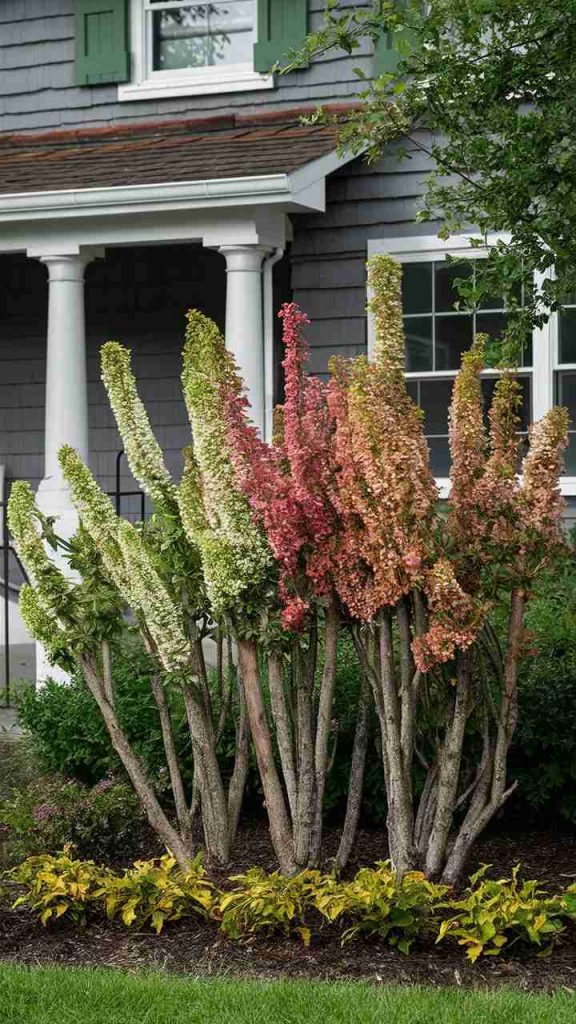
Ninebark is a deciduous shrub known for its attractive peeling bark, which provides winter interest, and its clusters of white or pink flowers that bloom in late spring to early summer. The foliage can range from green to deep burgundy, adding color and texture to your garden.
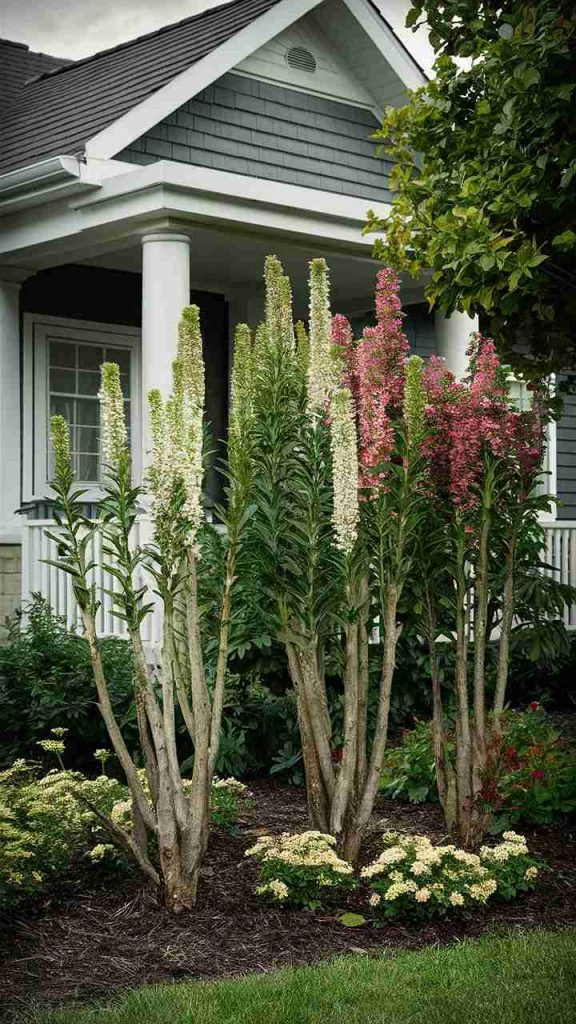
Ninebark thrives in full sun to partial shade and prefers well-drained soil. It’s a hardy plant that requires minimal care, making it an excellent choice for low-maintenance gardens. Pruning can help maintain its shape and encourage new growth.
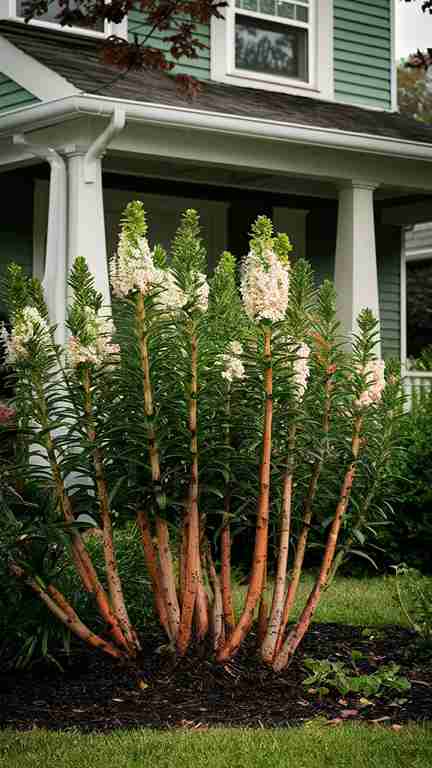
The combination of peeling bark, colorful foliage, and pretty flowers makes Ninebark a versatile and attractive addition to any front yard. It’s particularly effective in mixed borders, as a hedge, or as a standalone specimen. The multi-season interest provided by this shrub ensures your landscape remains appealing year-round.
19. Abelia
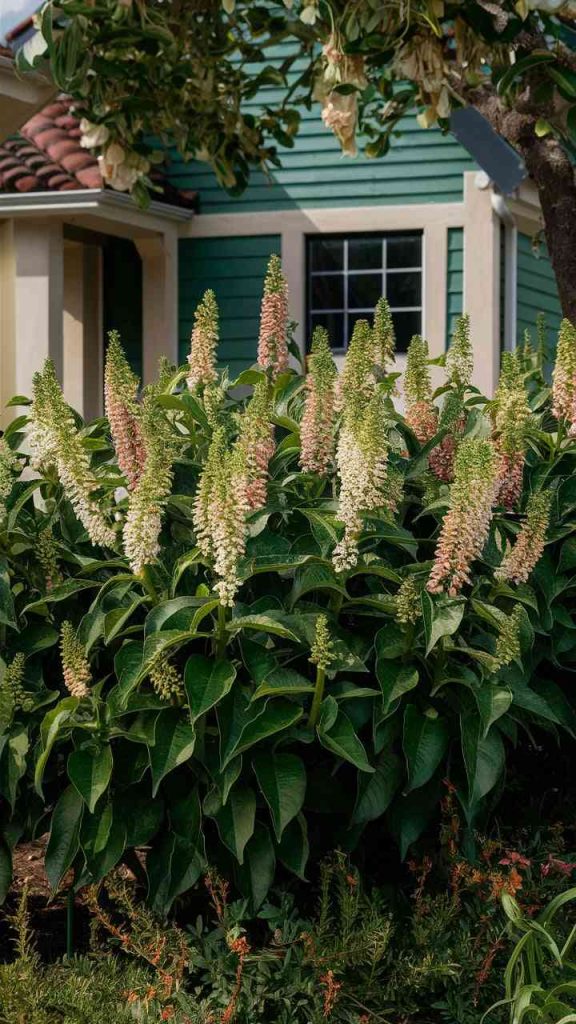
Abelia is a semi-evergreen shrub known for its glossy, green leaves and tubular flowers that bloom from late spring to fall. The flowers are typically white or pink and attract pollinators like bees and butterflies.
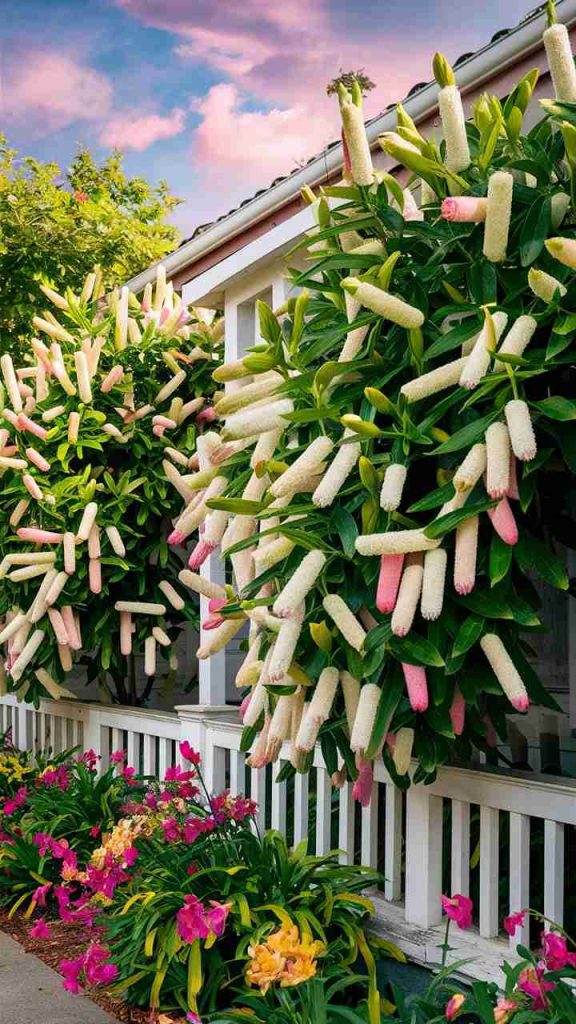
Abelia thrives in full sun to partial shade and prefers well-drained soil. It’s a low-maintenance plant that requires minimal pruning, typically just to remove dead or damaged branches and to maintain its shape.
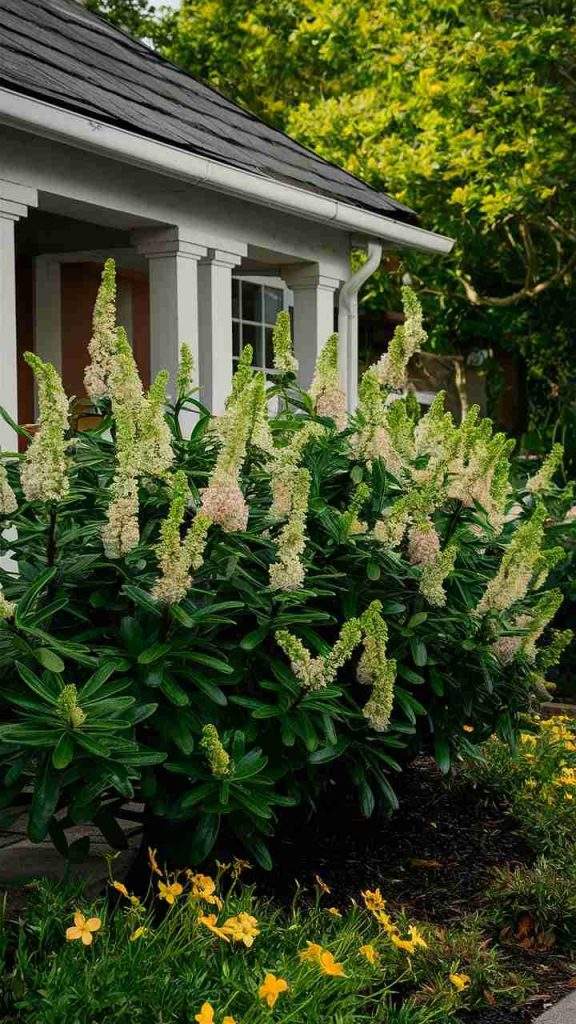
With its long blooming period and attractive foliage, Abelia can add continuous color and interest to your front yard. It’s particularly effective in mixed borders, as a foundation planting, or as part of a flowering hedge. The combination of beauty and ease of care makes Abelia a valuable addition to any landscape.
20. Daphne
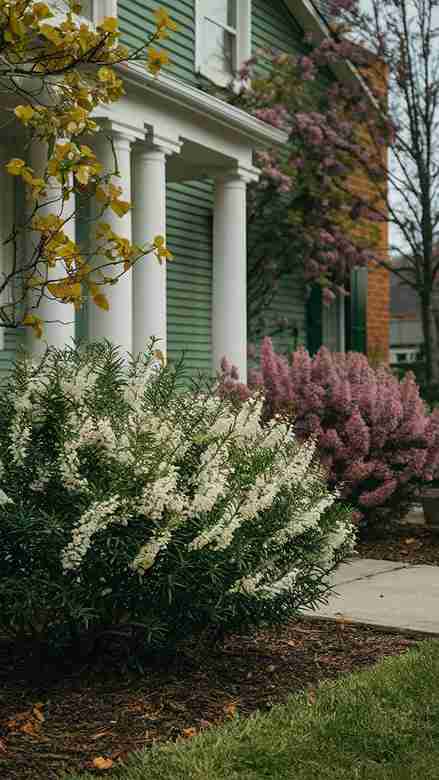
Daphne is a deciduous or evergreen shrub known for its fragrant flowers, which bloom in late winter to early spring. The flowers are typically white, pink, or purple and emit a sweet, intoxicating scent that can fill your garden.
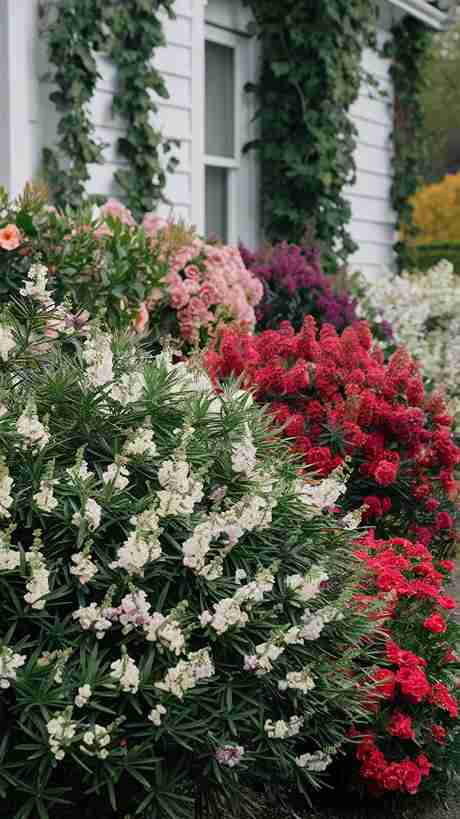
Daphne thrives in partial shade and well-drained, slightly acidic soil. It’s a slow-growing plant that requires minimal pruning, typically just to remove dead or damaged branches.
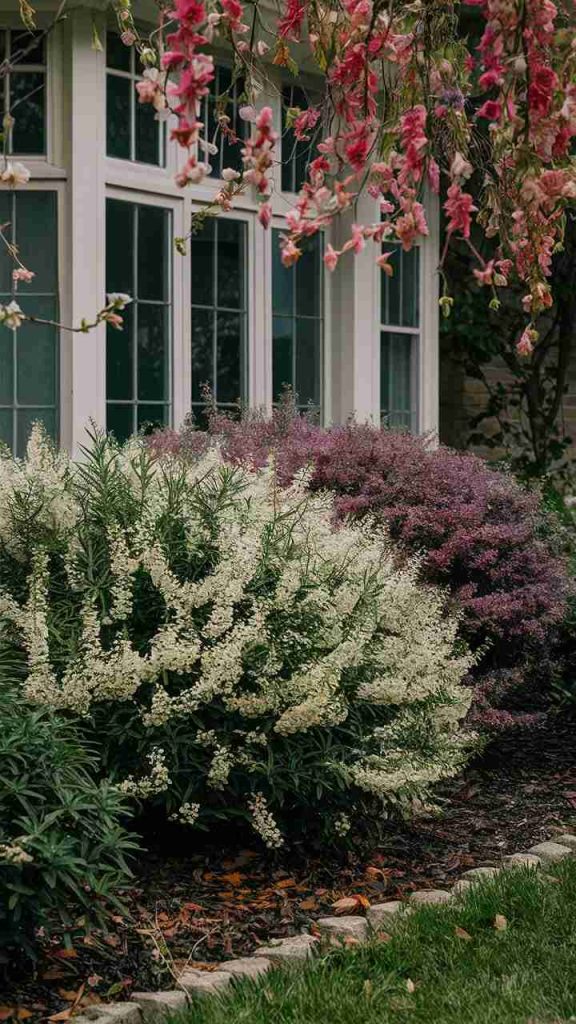
With its early blooms and delightful fragrance, Daphne can add a touch of elegance to your front yard. It’s particularly effective in woodland gardens, mixed borders, or as a specimen plant. The combination of fragrant flowers and attractive foliage makes Daphne a valuable addition to any landscape.
21. Kerria (Kerria japonica)
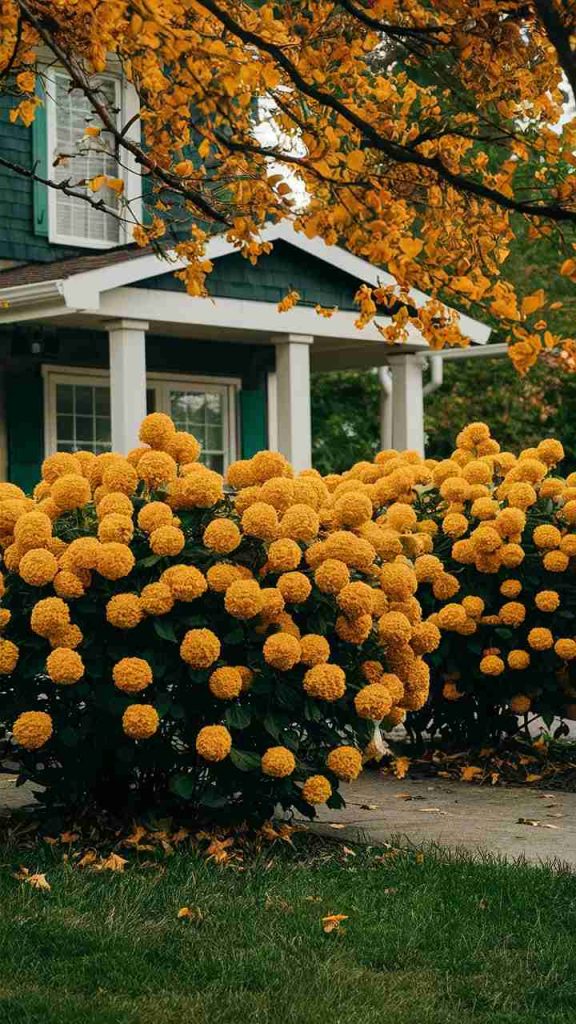
Kerria, also known as Japanese Rose, is a deciduous shrub known for its bright yellow, pom-pom-like flowers that bloom in spring. The blooms are followed by attractive green foliage that turns yellow in fall, providing seasonal interest.
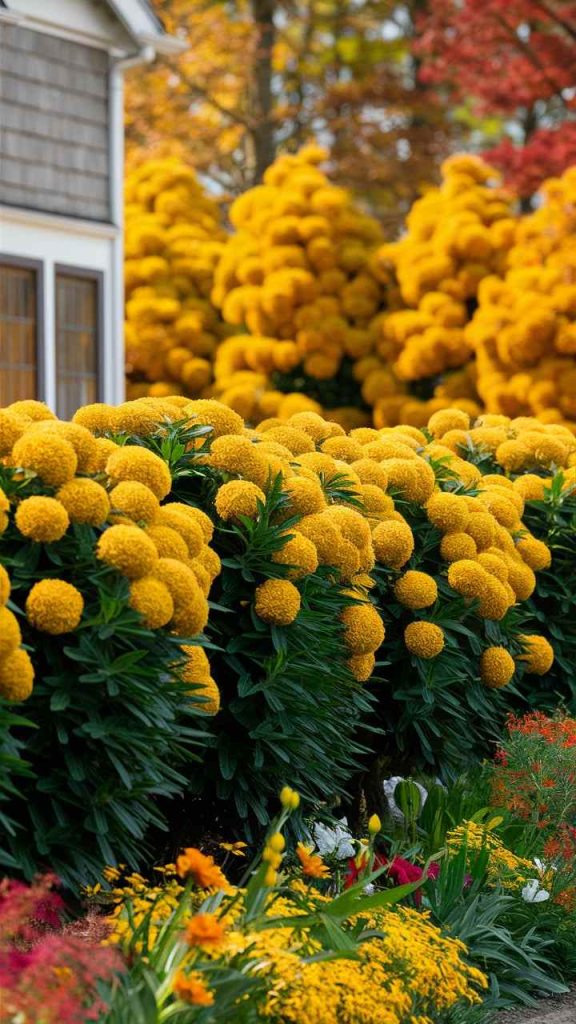
Kerria thrives in partial shade and well-drained soil. It’s a low-maintenance plant that requires minimal pruning, typically just to remove dead or damaged branches.
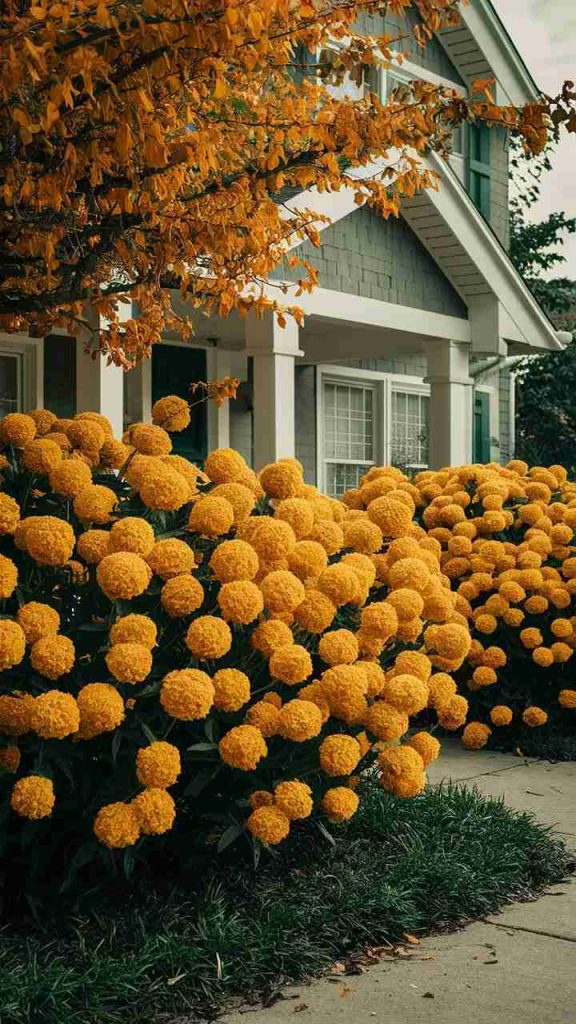
With its cheerful flowers and attractive foliage, Kerria can add a splash of color to your front yard. It’s particularly effective in woodland gardens, mixed borders, or as part of a flowering hedge. The combination of spring blooms and fall color makes Kerria a versatile and attractive choice for any landscape.
22. Euonymus
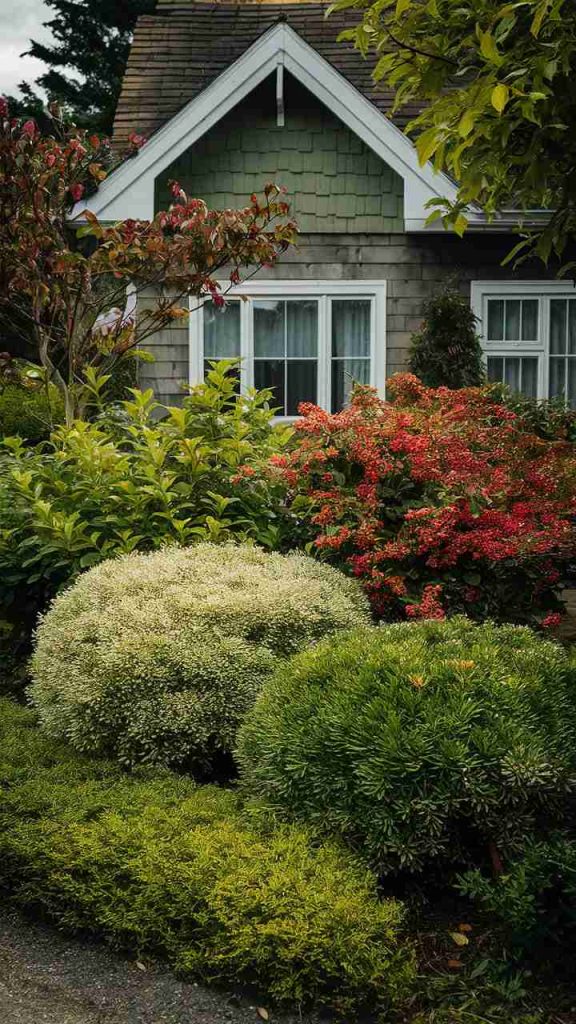
Euonymus is a versatile shrub known for its attractive foliage, which can range from green to variegated shades of white, yellow, and pink. Some varieties also produce small, inconspicuous flowers followed by colorful berries.
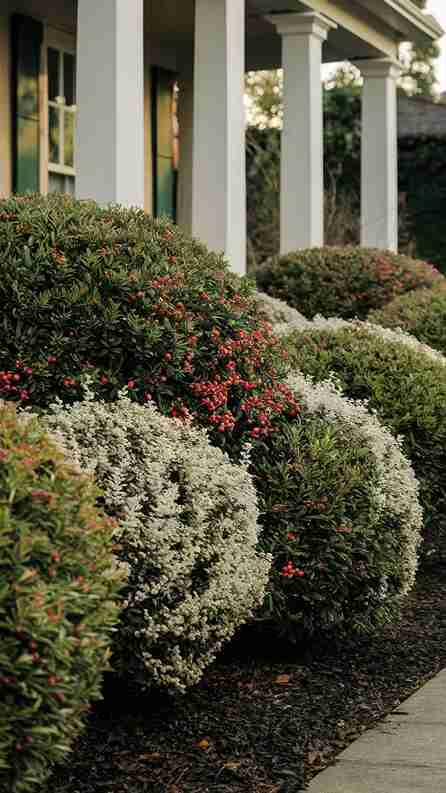
Euonymus thrives in full sun to partial shade and prefers well-drained soil. It’s a hardy plant that requires minimal care, making it an excellent choice for low-maintenance gardens. Pruning can help maintain its shape and encourage new growth.
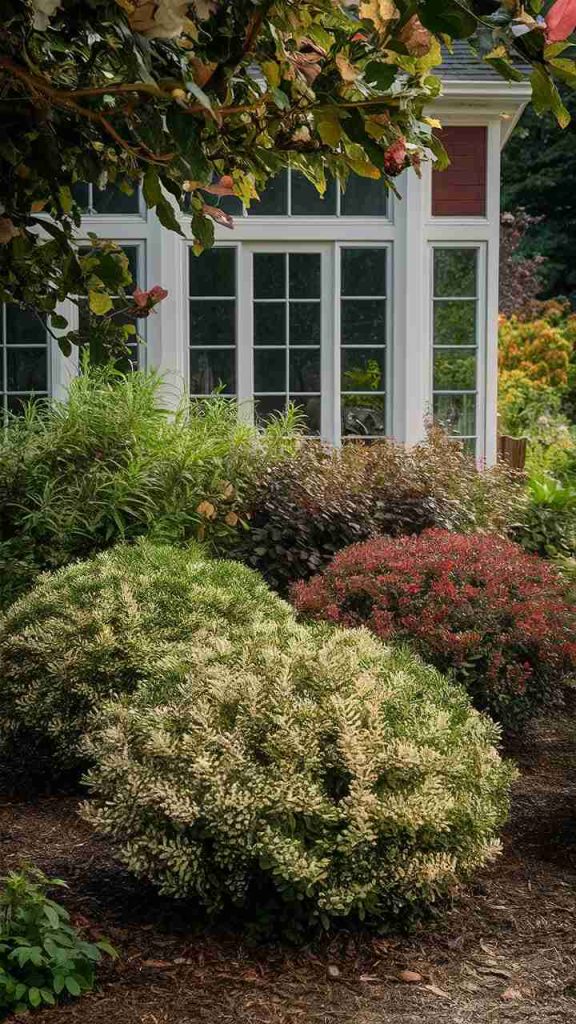
The colorful foliage and occasional berries make Euonymus a valuable addition to any front yard. It’s particularly effective in mixed borders, as a hedge, or as a foundation planting. The combination of beauty and ease of care ensures that Euonymus will add continuous interest to your landscape.
23. Potentilla
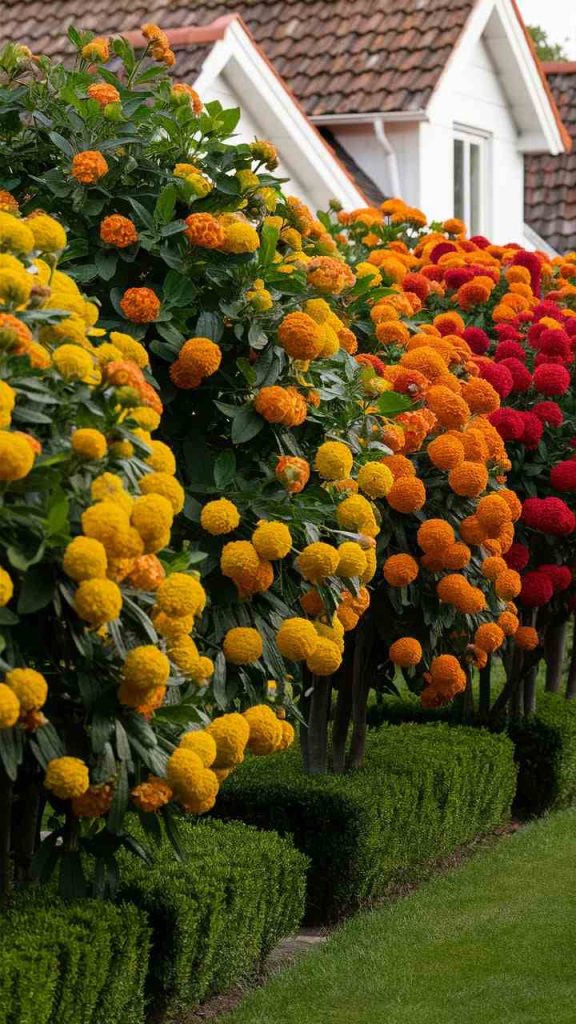
Potentilla is a deciduous shrub known for its bright, cheerful flowers that bloom from late spring to fall. The flowers come in various shades of yellow, white, pink, and red, providing a long season of color.
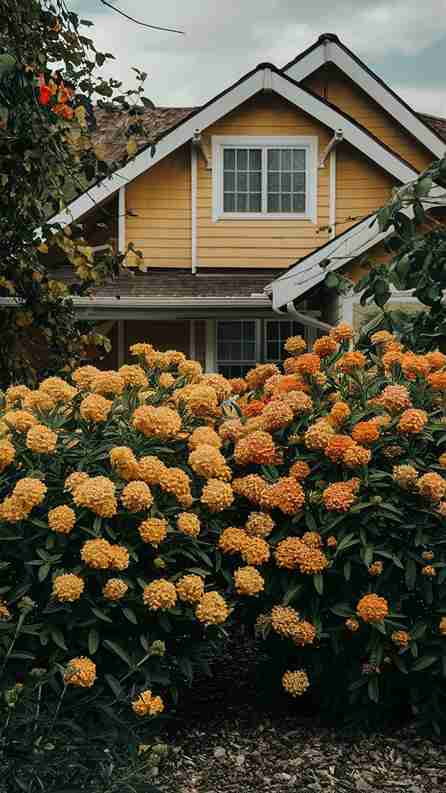
Potentilla thrives in full sun and well-drained soil. It’s a low-maintenance plant that requires minimal pruning, typically just to remove dead or damaged branches and to maintain its shape.
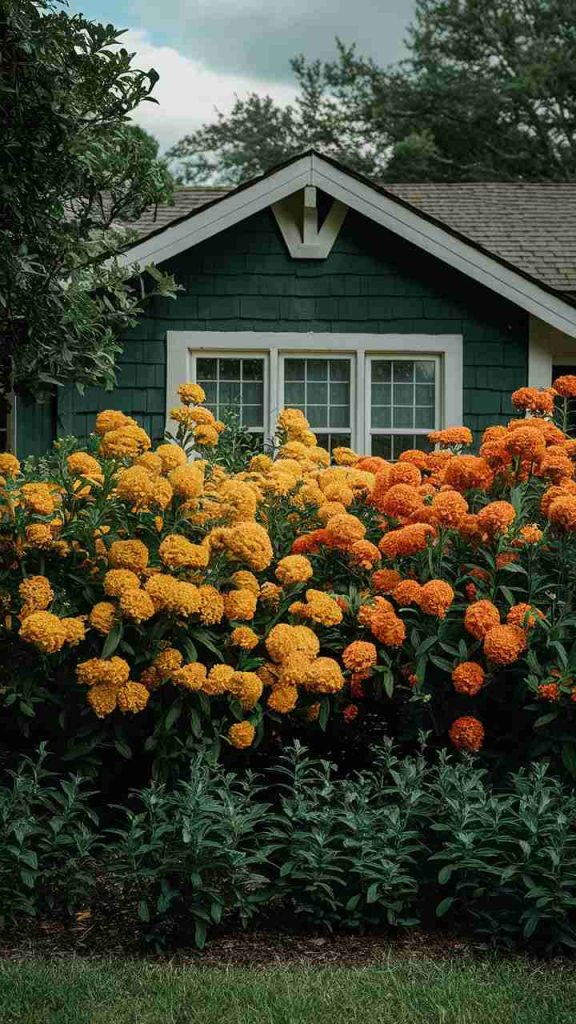
With its long blooming period and attractive foliage, Potentilla can add continuous color and interest to your front yard. It’s particularly effective in mixed borders, as a foundation planting, or as part of a flowering hedge. The combination of beauty and ease of care makes Potentilla a valuable addition to any landscape.
24. Winterberry (Ilex verticillata)
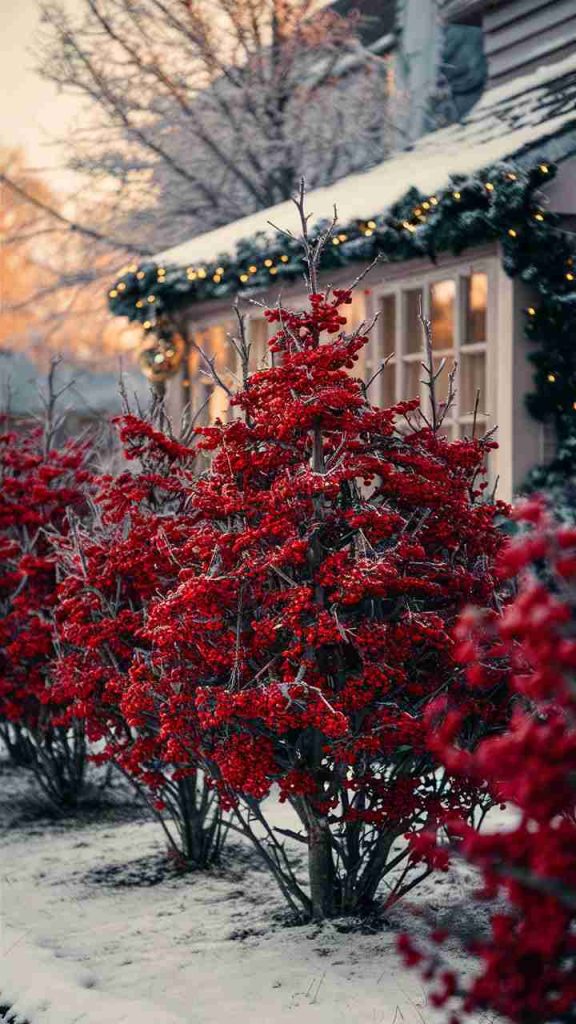
Winterberry is a deciduous holly known for its bright red berries that persist through winter, providing a splash of color in the cold months. The berries are particularly striking against the bare branches and attract birds to your garden.
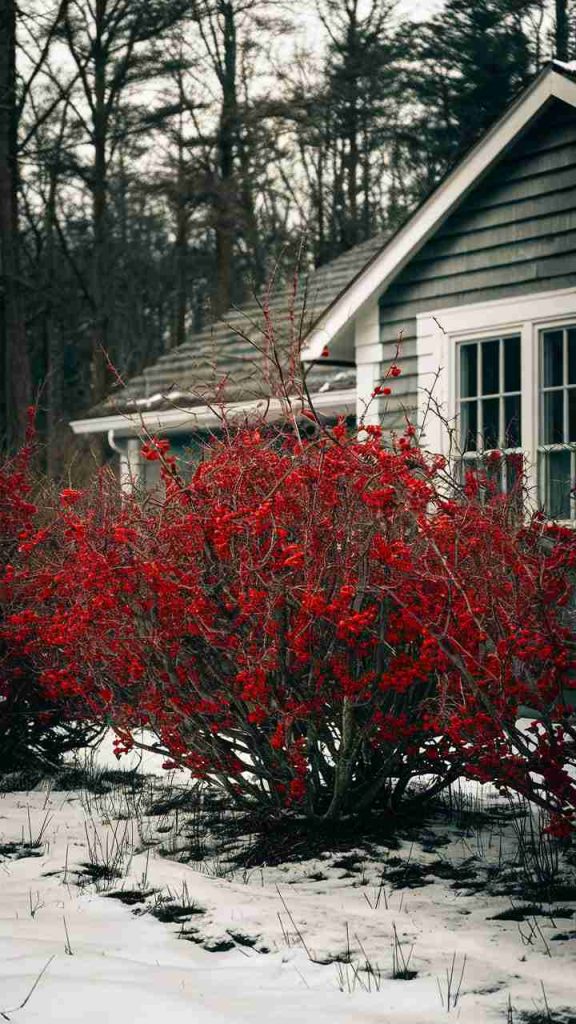
Winterberry thrives in full sun to partial shade and prefers wet, acidic soil. It’s a hardy plant that requires minimal care, making it an excellent choice for low-maintenance gardens. Pruning can help maintain its shape and encourage new growth.
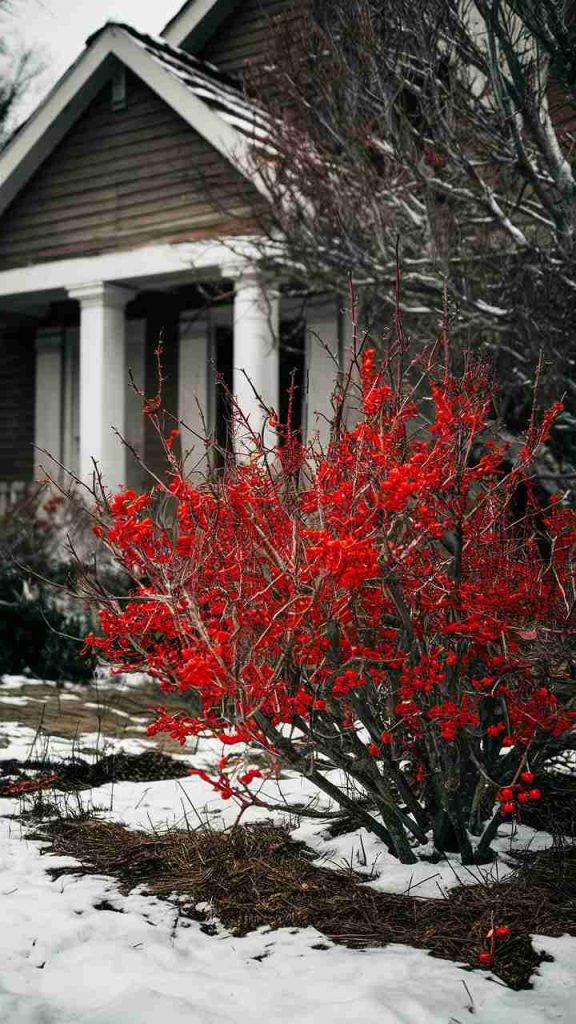
The colorful berries and attractive foliage make Winterberry a valuable addition to any front yard. It’s particularly effective in mixed borders, as a hedge, or as part of a winter garden. The combination of beauty and wildlife value ensures that Winterberry will add continuous interest to your landscape.
25. Nandina (Nandina domestica)
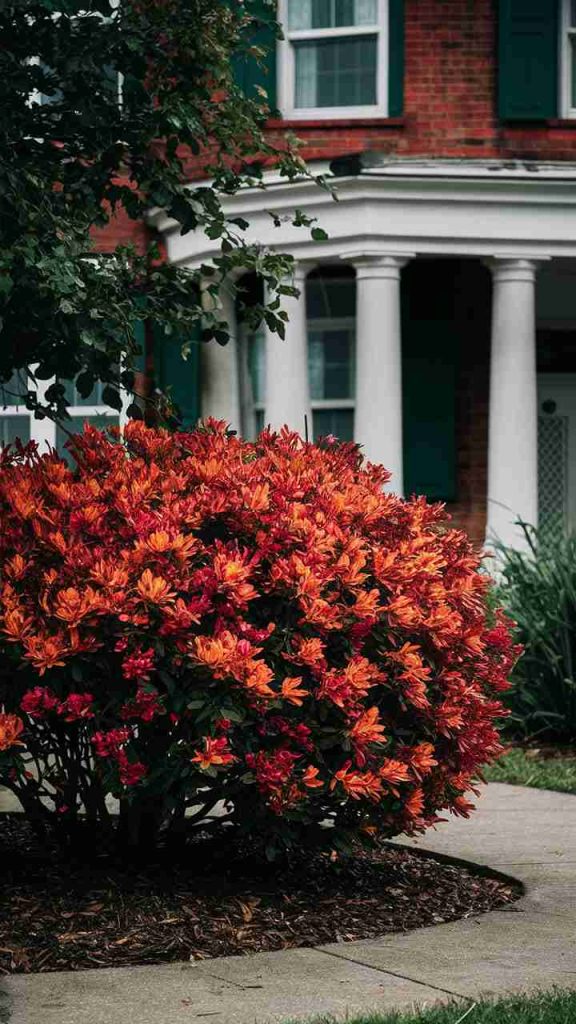
Nandina, also known as Heavenly Bamboo, is an evergreen shrub known for its colorful foliage and bright red berries. The foliage changes color throughout the seasons, ranging from green to shades of red, orange, and purple.
Nandina thrives in full sun to partial shade and prefers well-drained soil. It’s a low-maintenance plant that requires minimal pruning, typically just to remove dead or damaged branches.
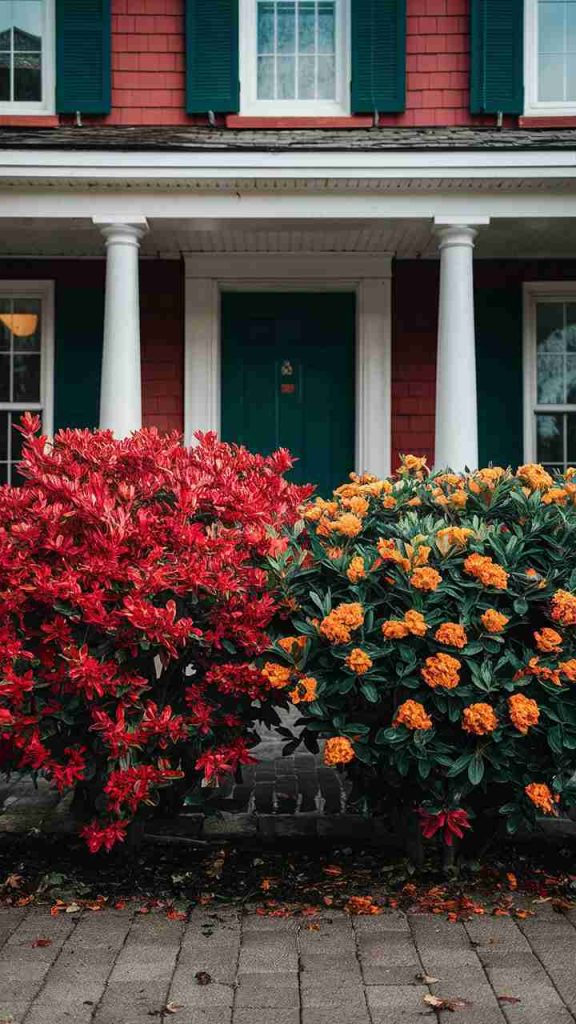
With its changing foliage colors and attractive berries, Nandina can add year-round interest to your front yard. It’s particularly effective in mixed borders, as a foundation planting, or as part of a winter garden. The combination of beauty and ease of care makes Nandina a valuable addition to any landscape.
Choosing the right bushes for your front yard can transform the look of your home, adding color, texture, and structure. Whether you prefer evergreen shrubs for year-round interest or deciduous varieties that provide seasonal blooms and foliage, there’s a bush to suit every style and garden design. By carefully selecting and placing these beautiful bushes, you can create a welcoming and visually appealing front yard that enhances your home’s curb appeal.

